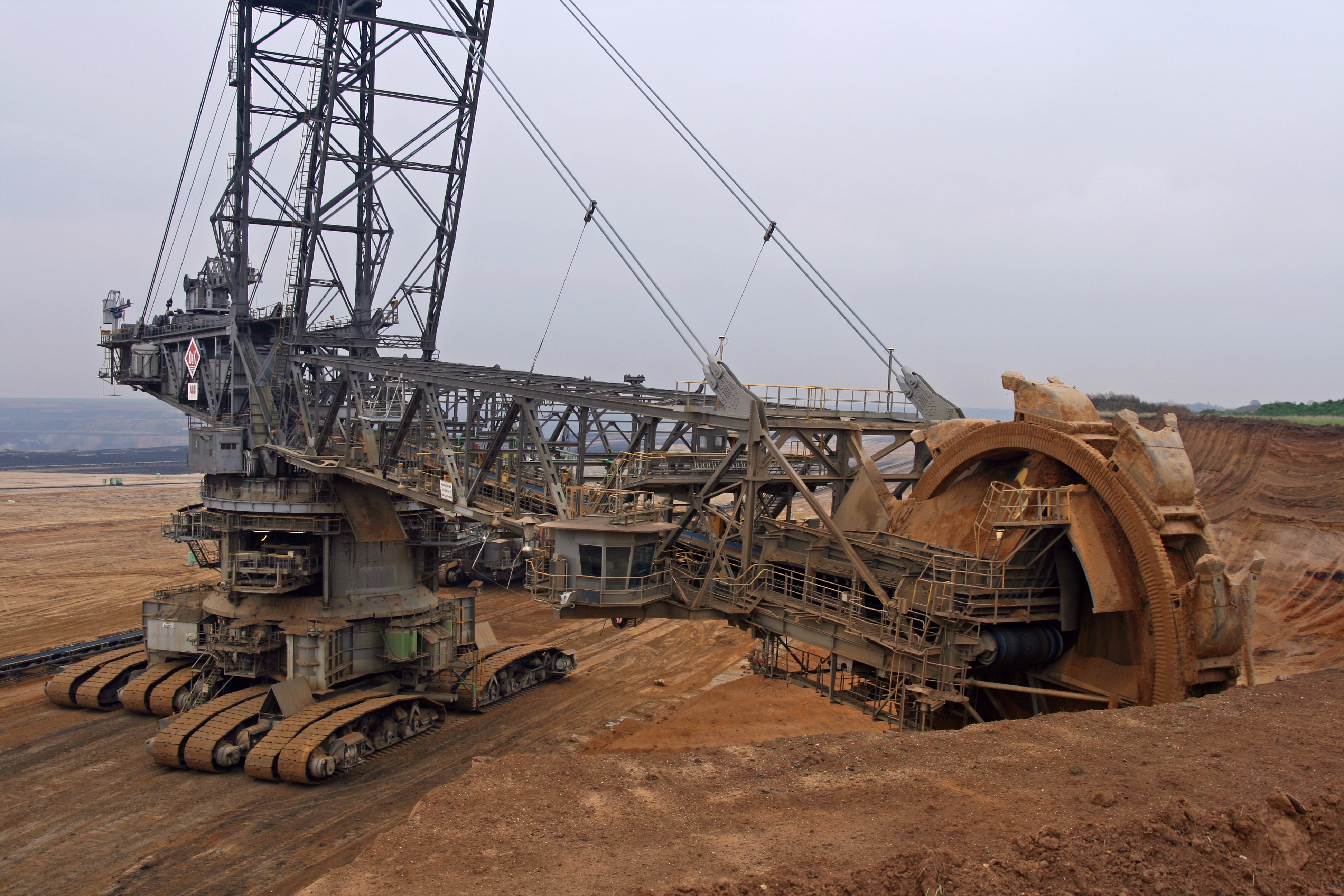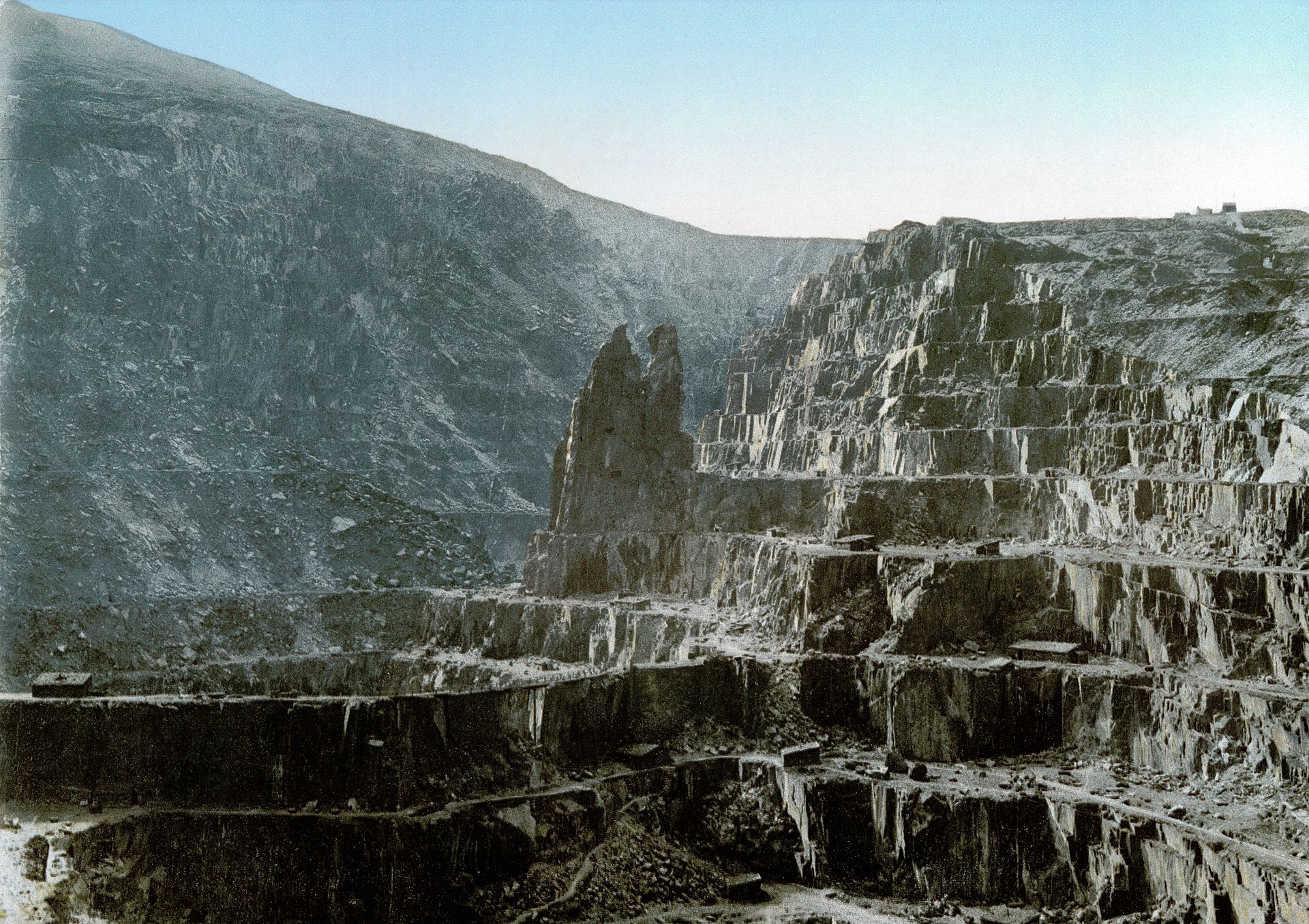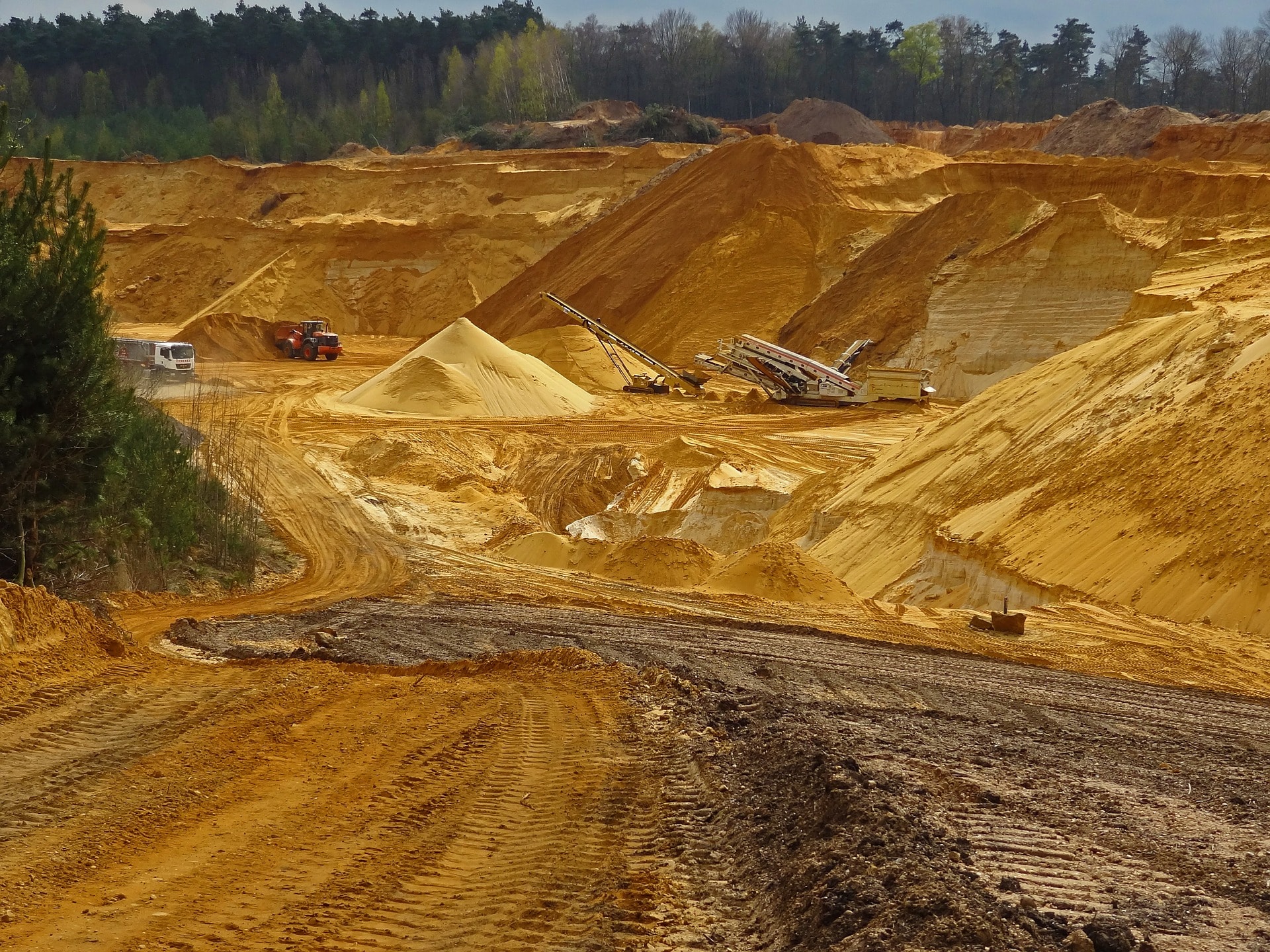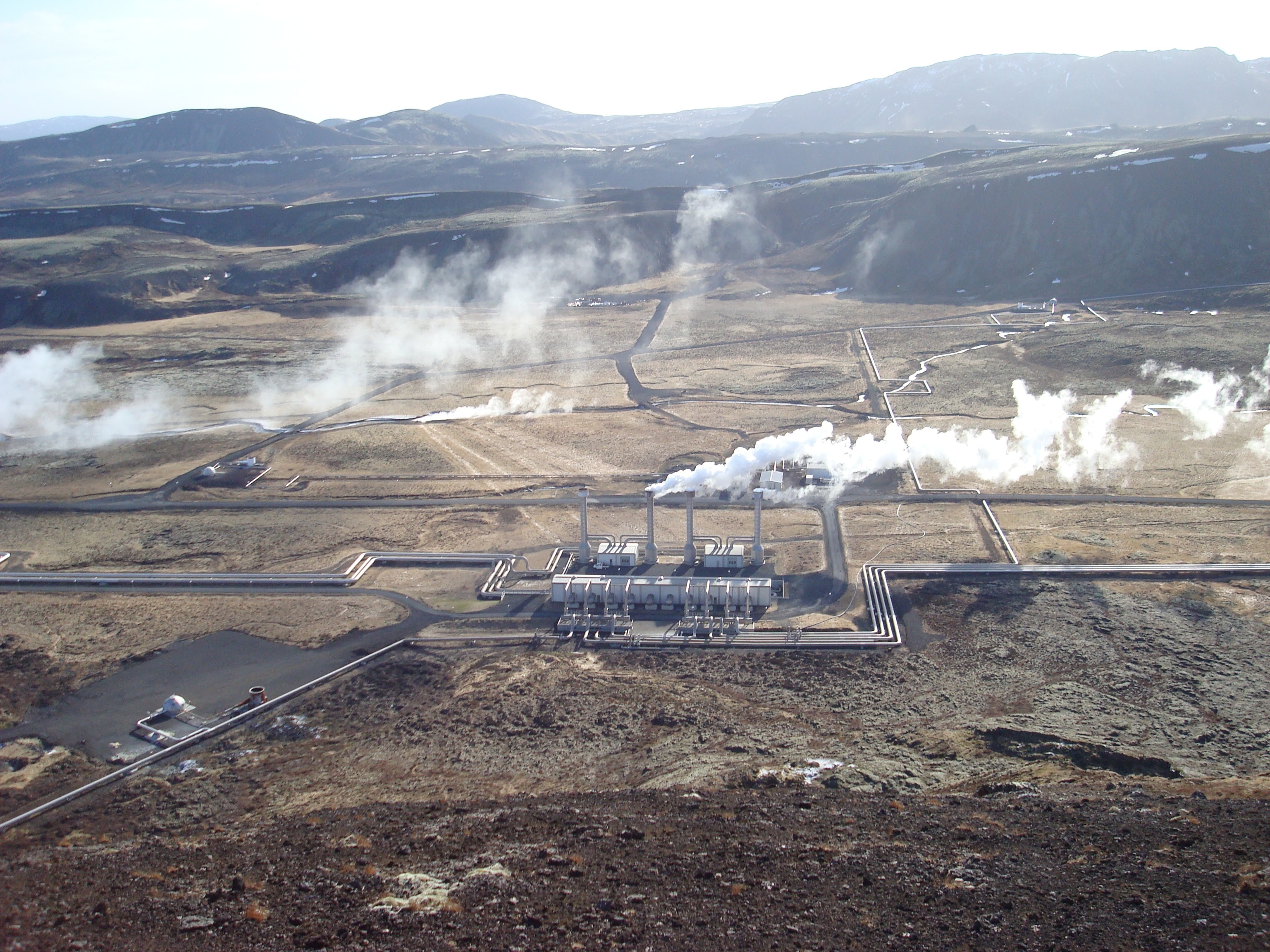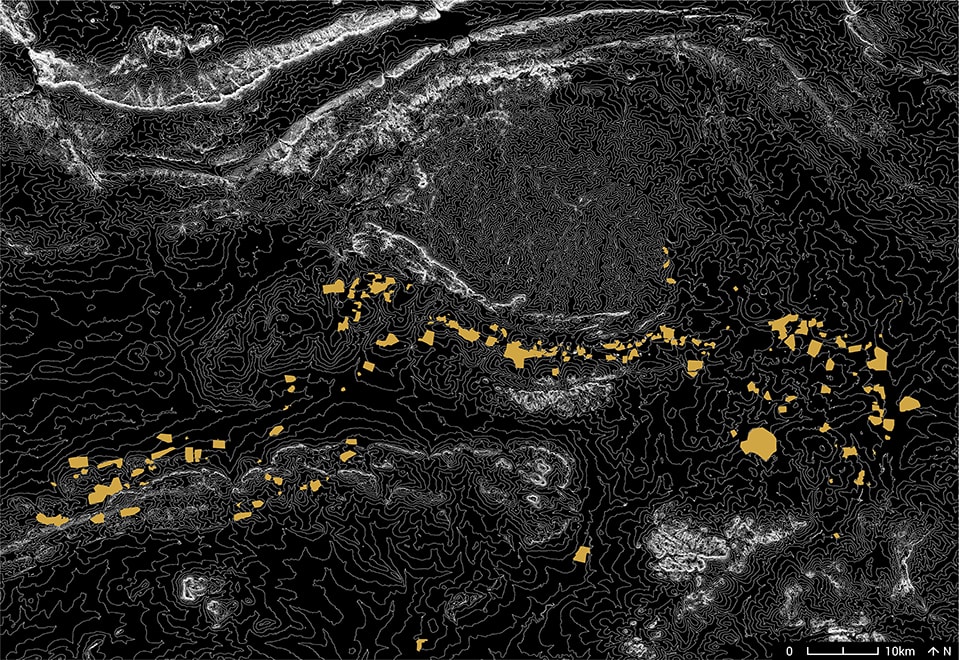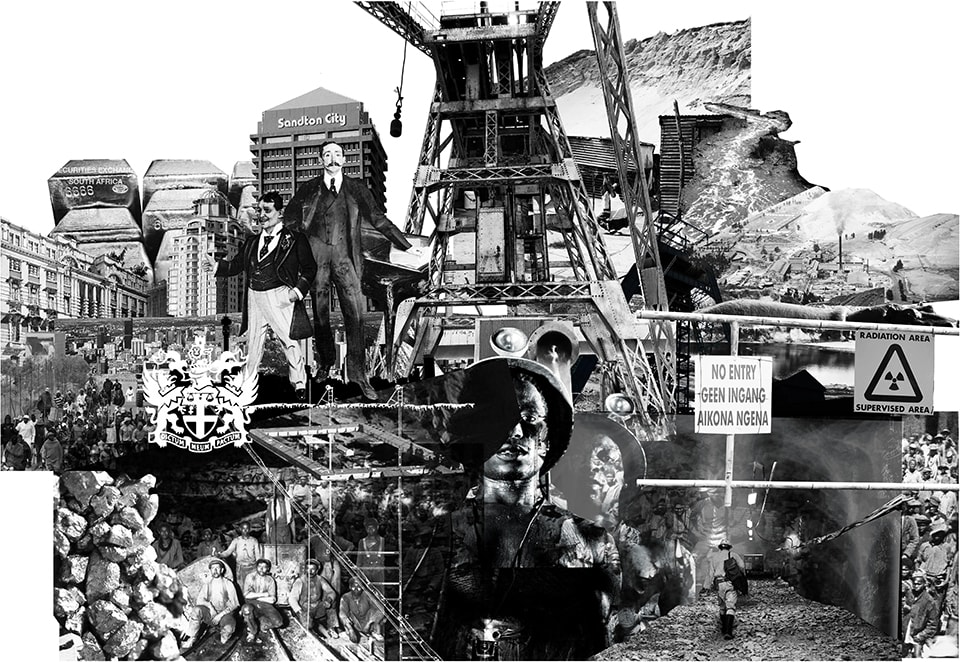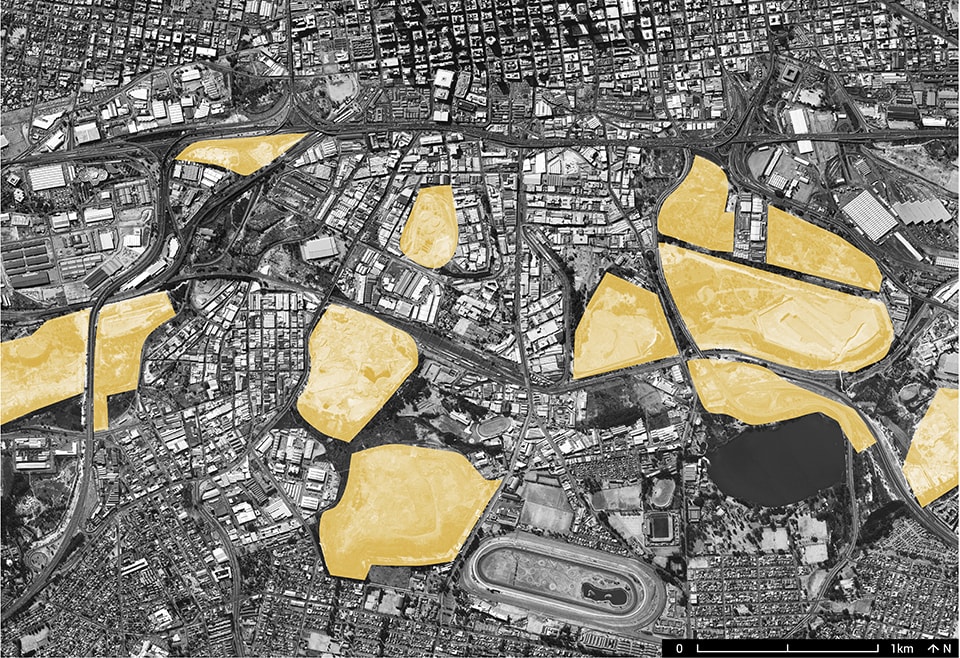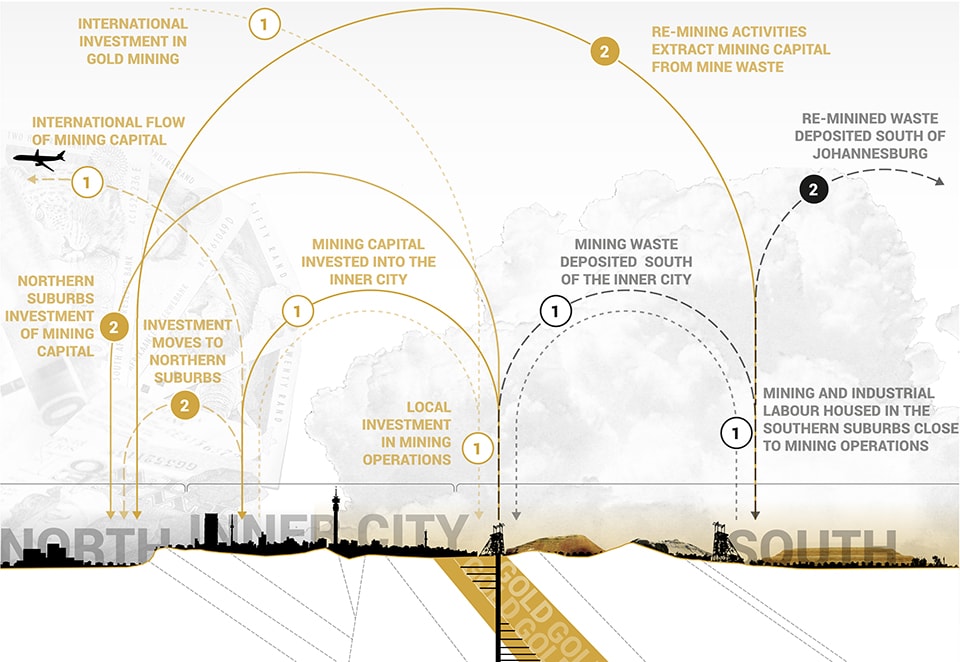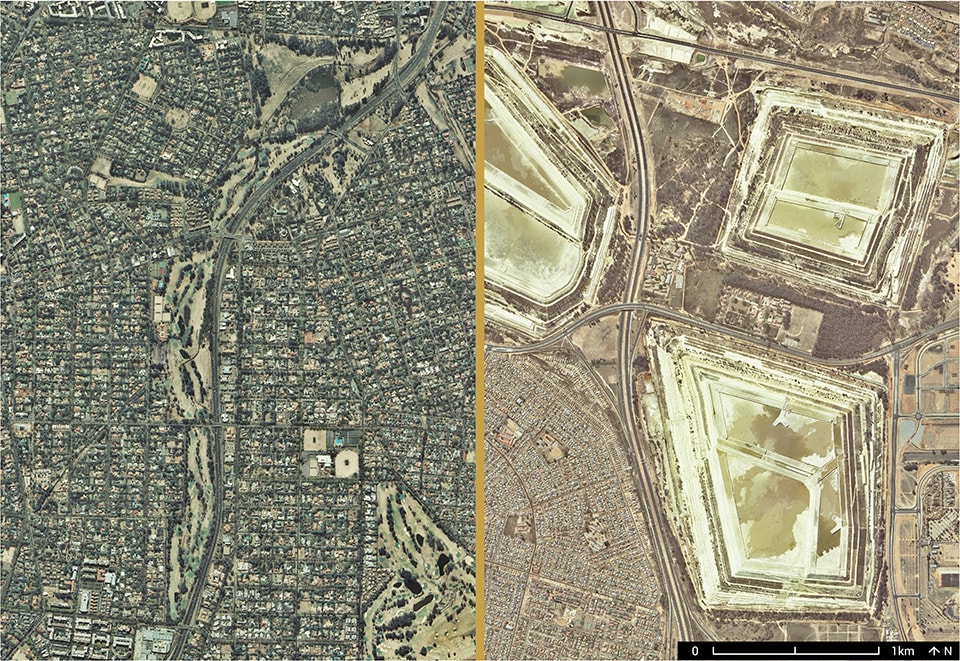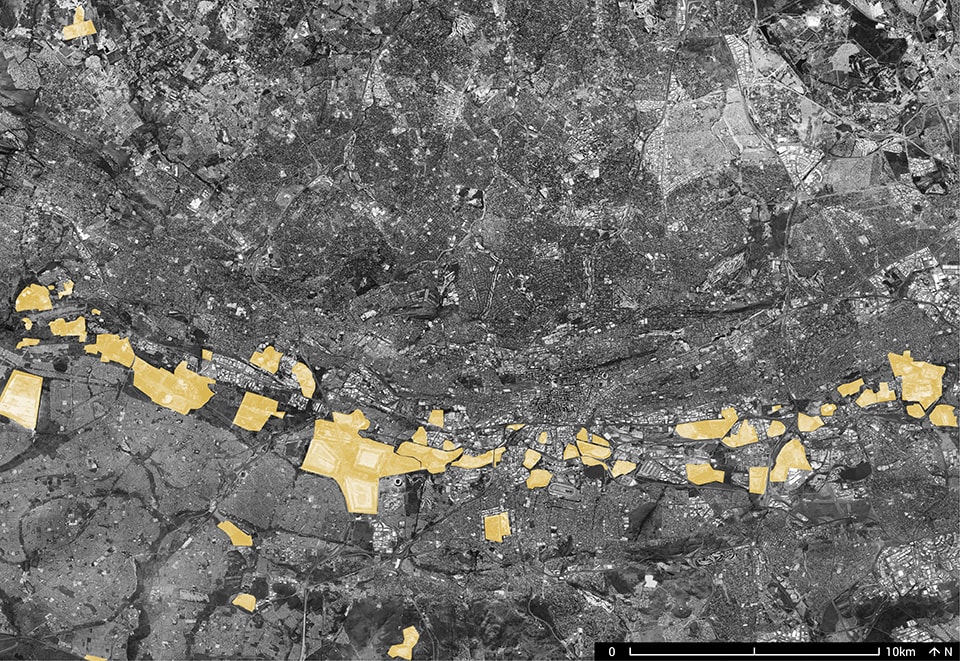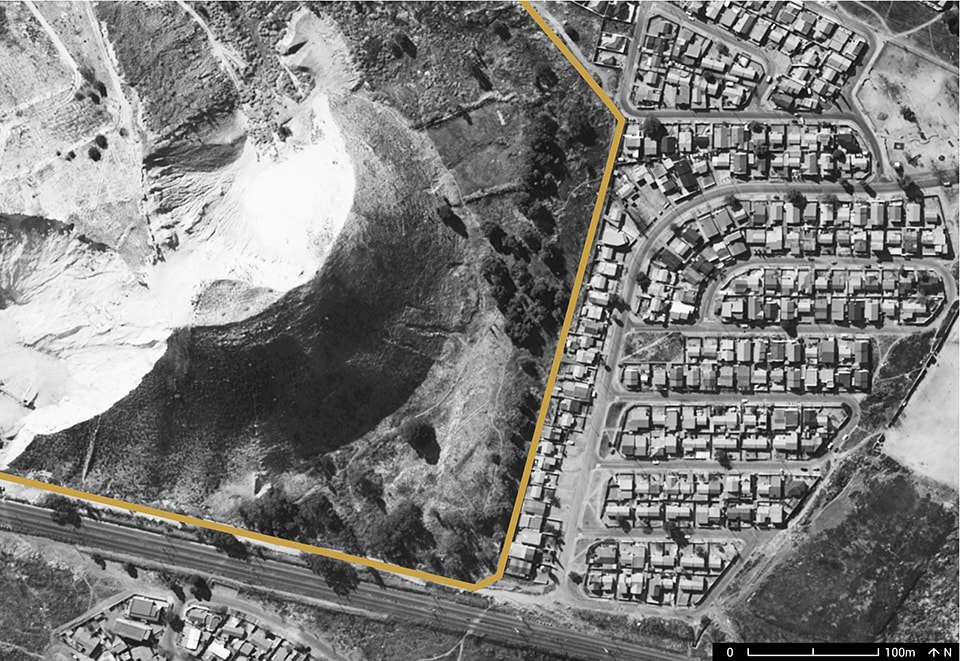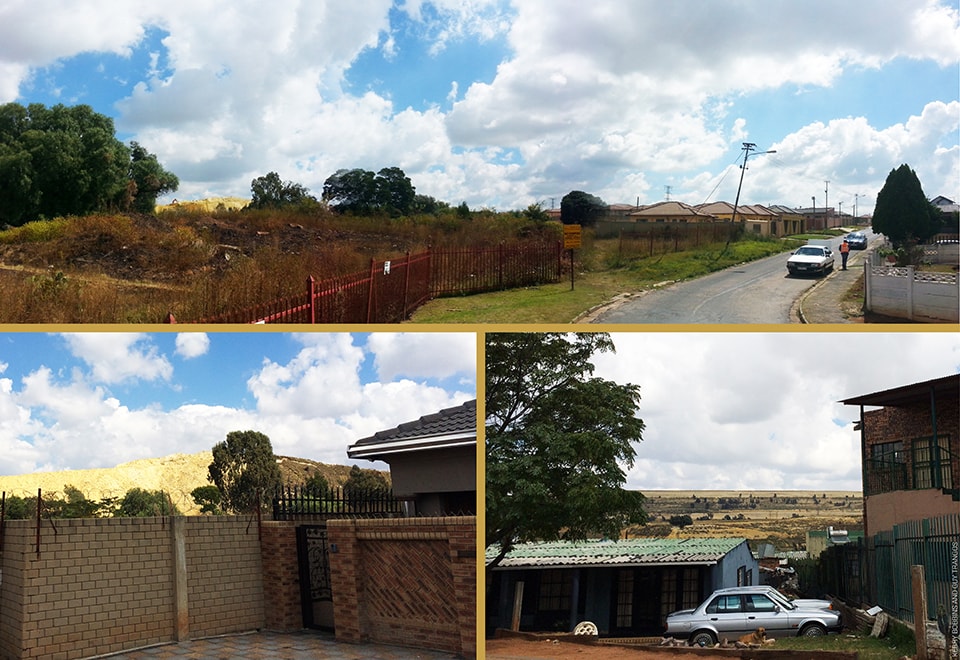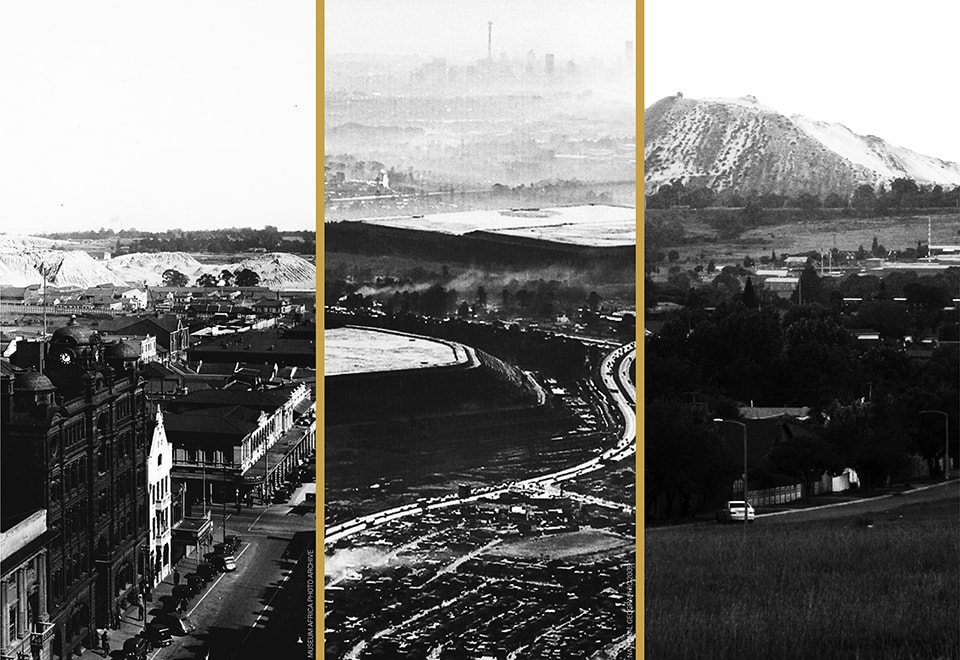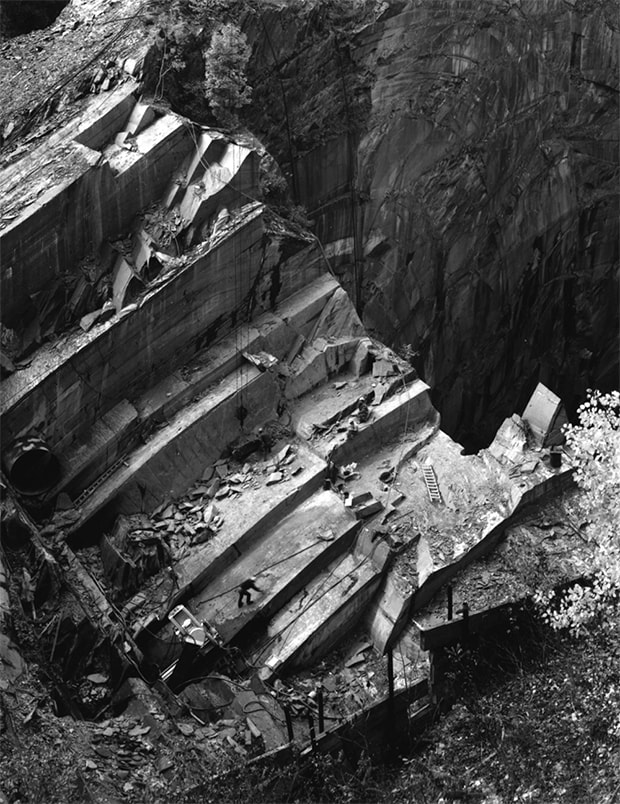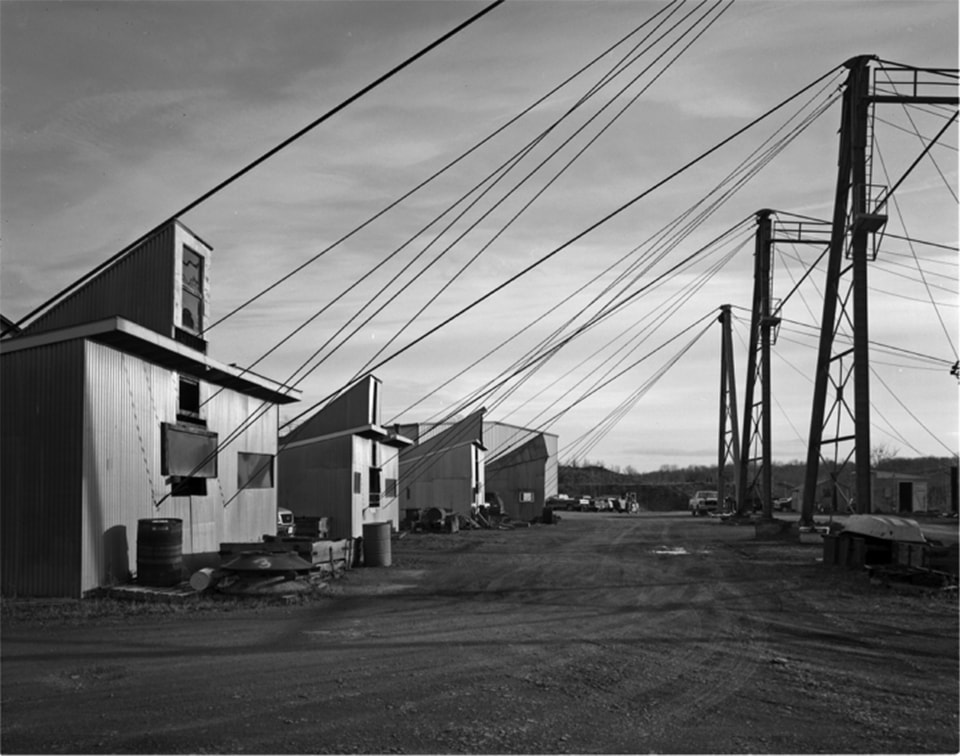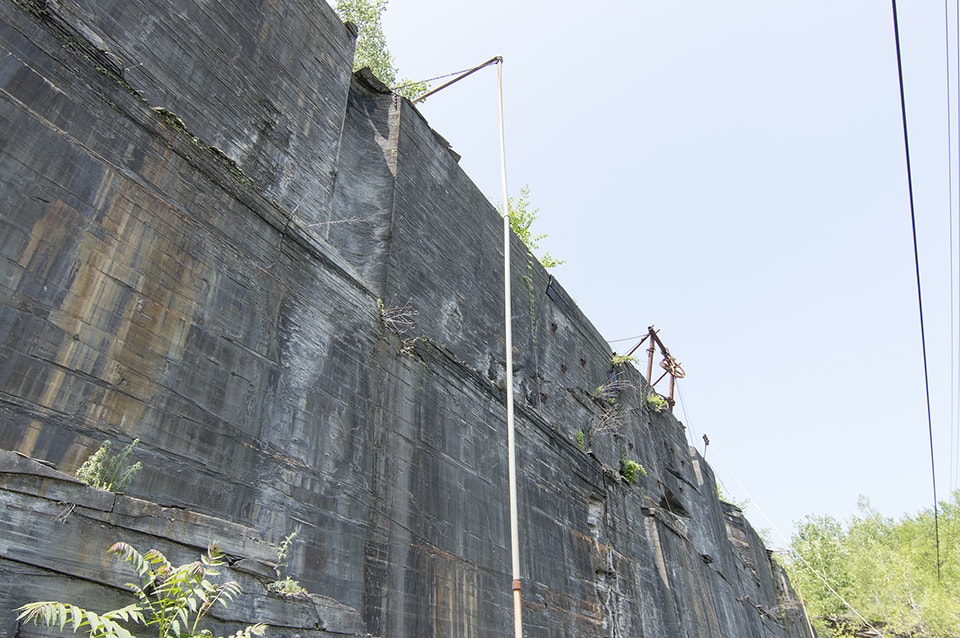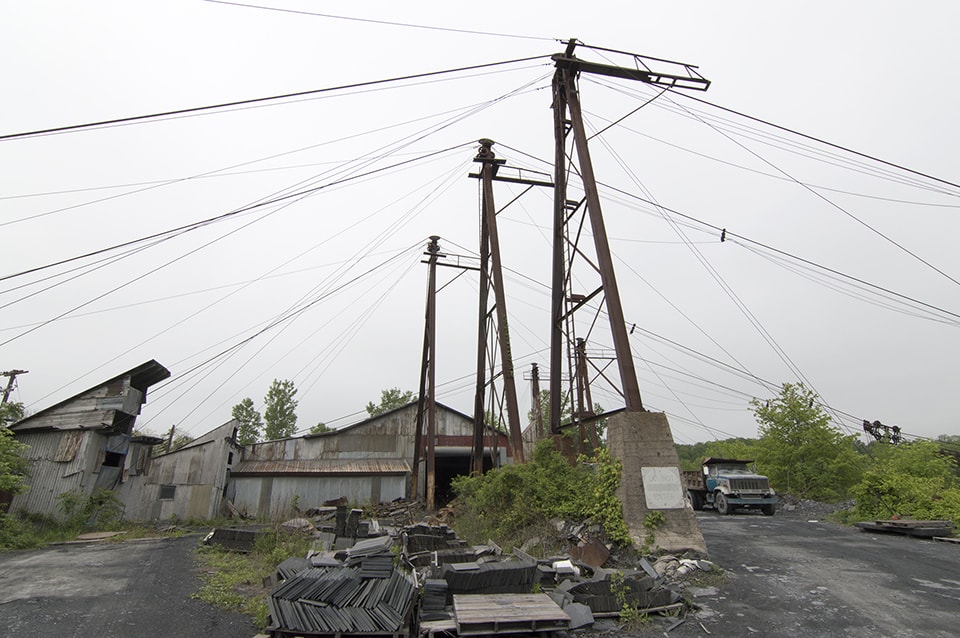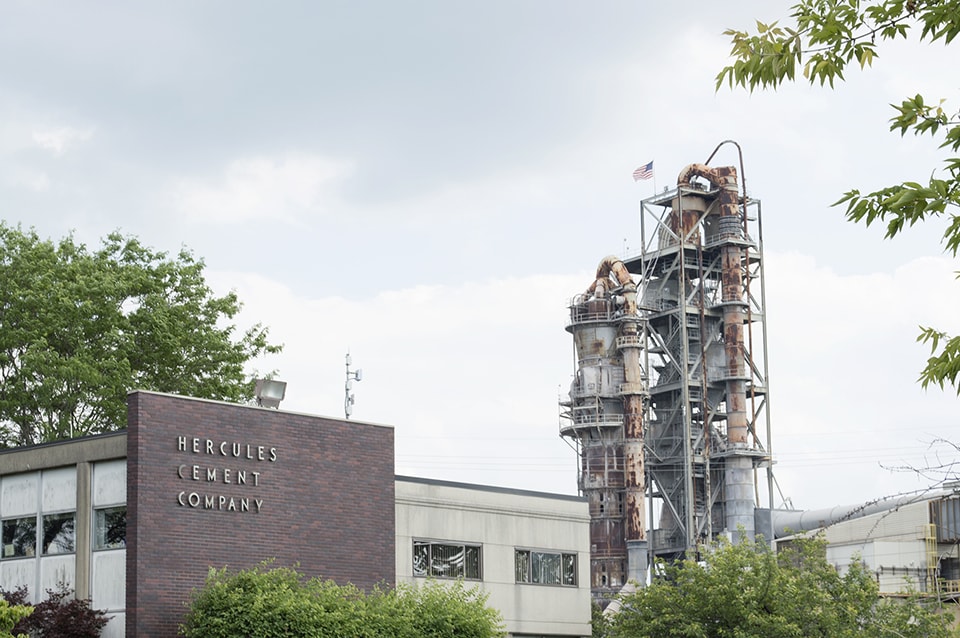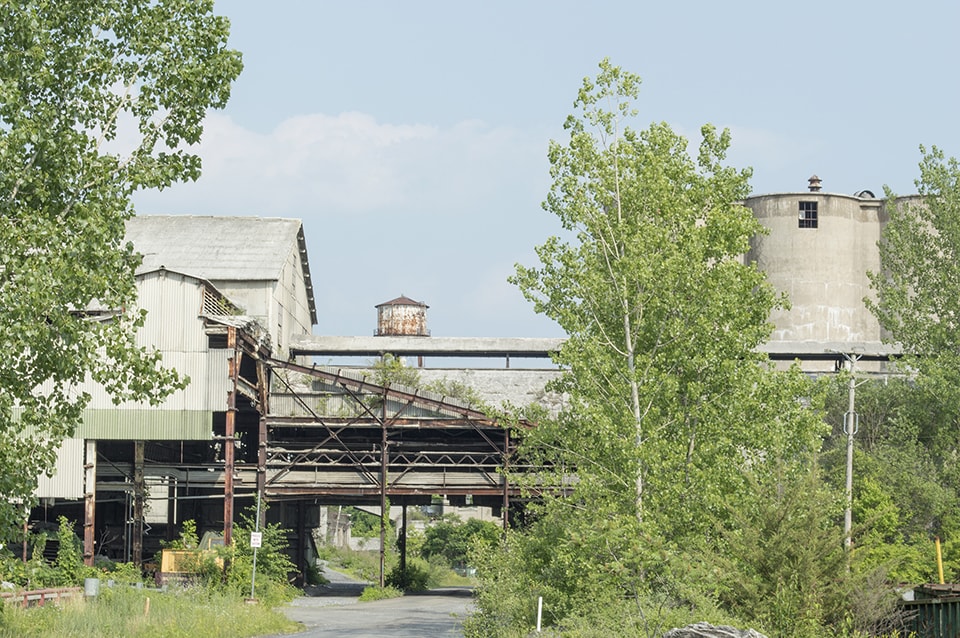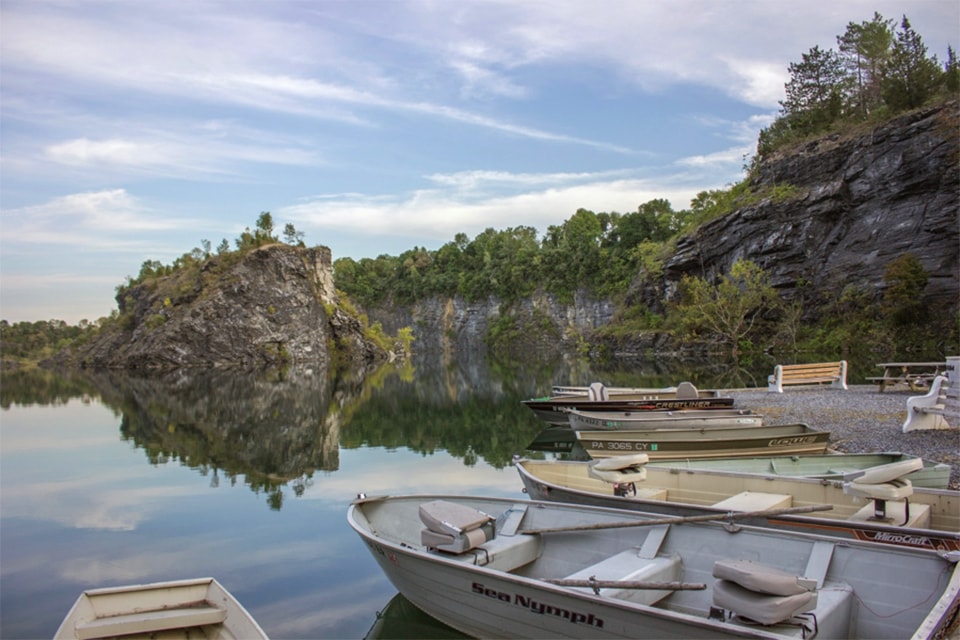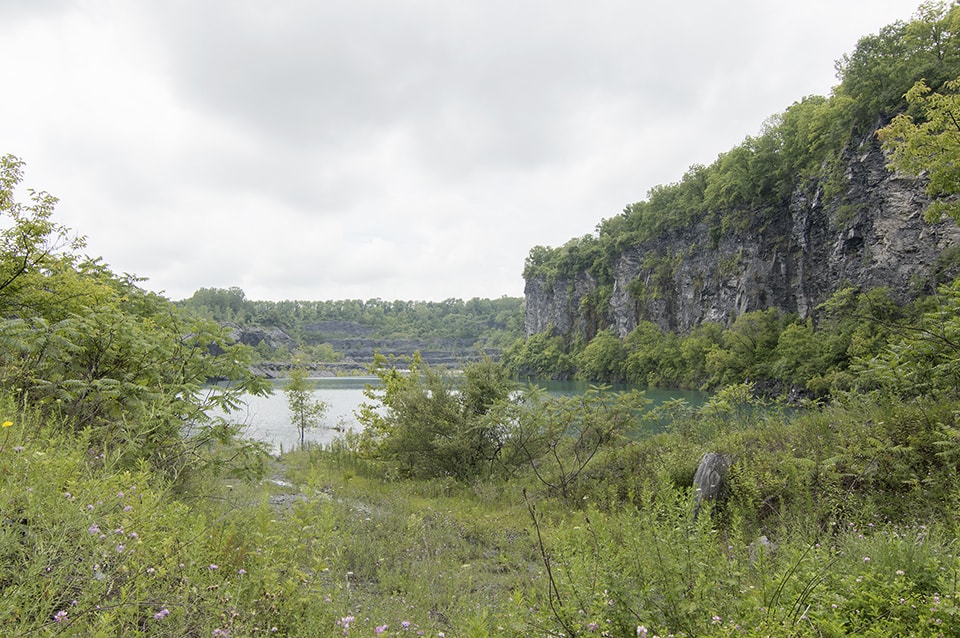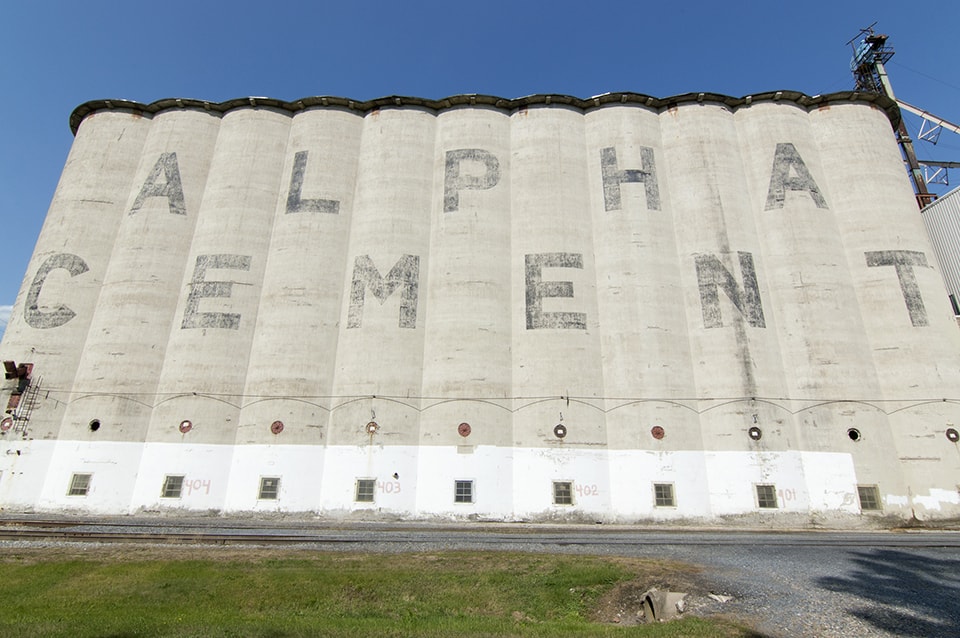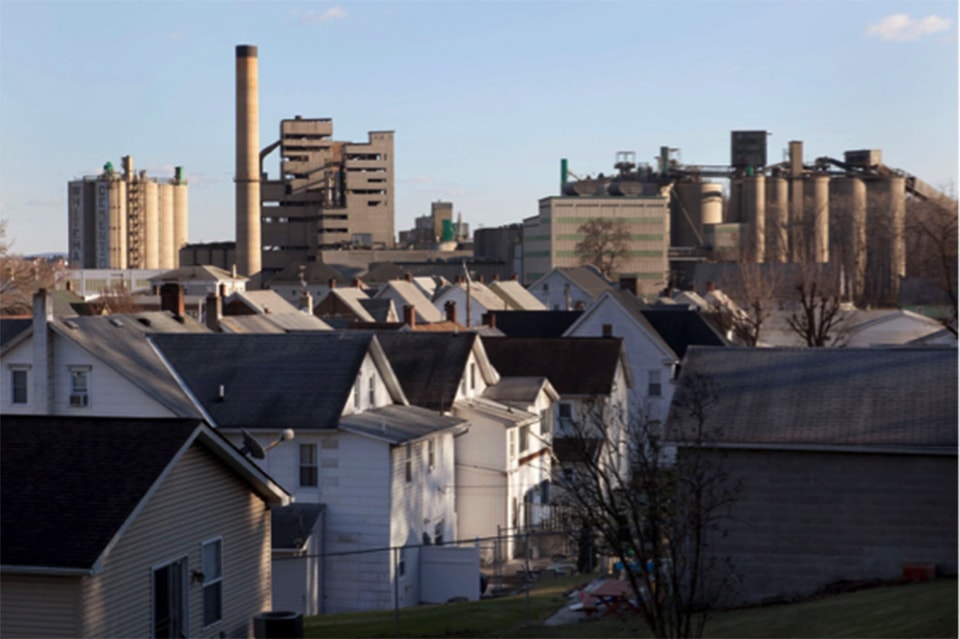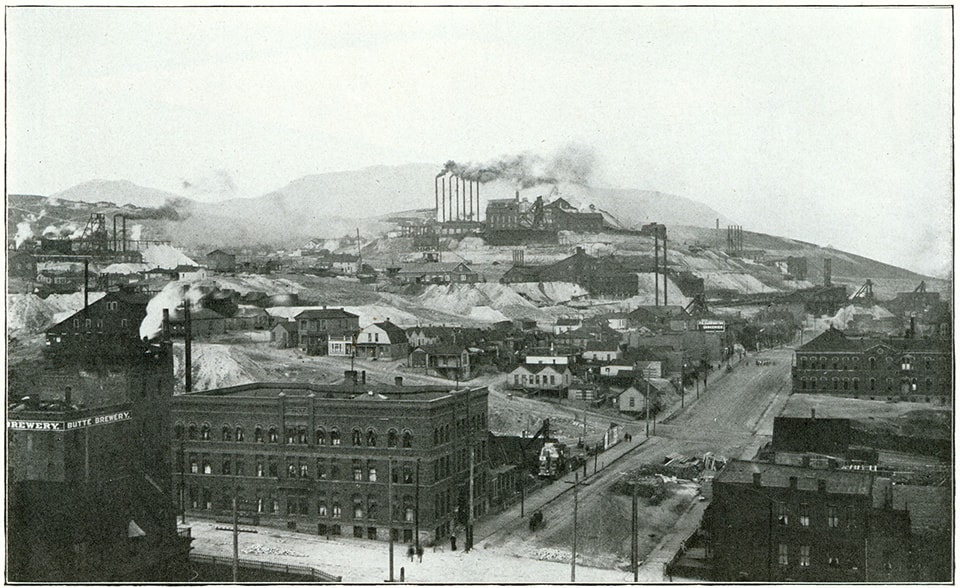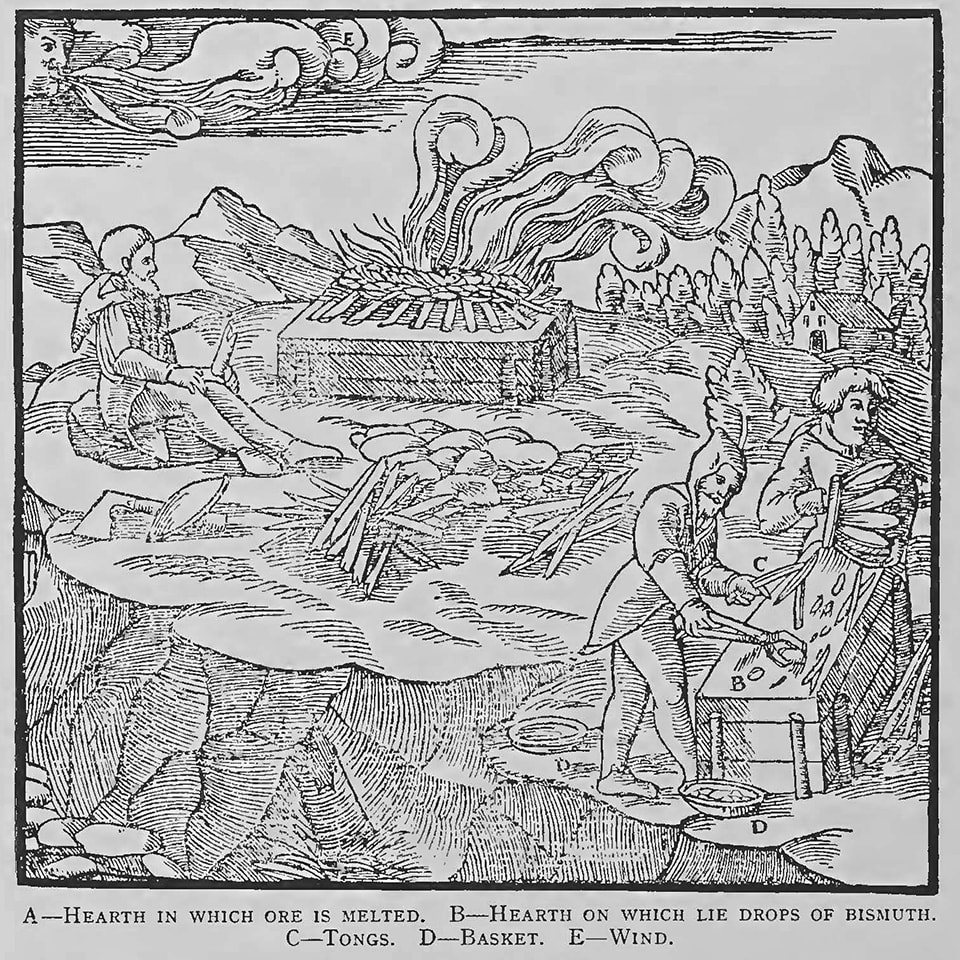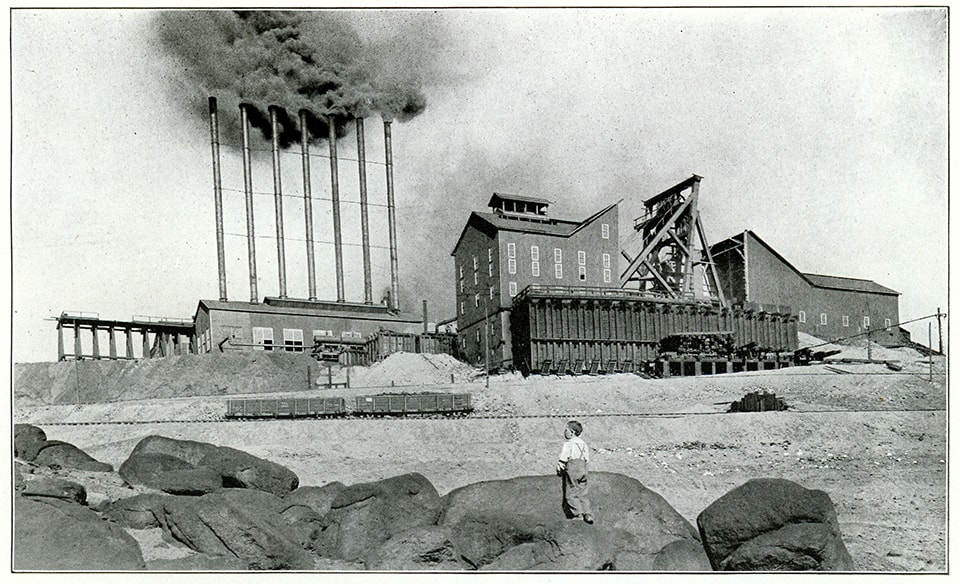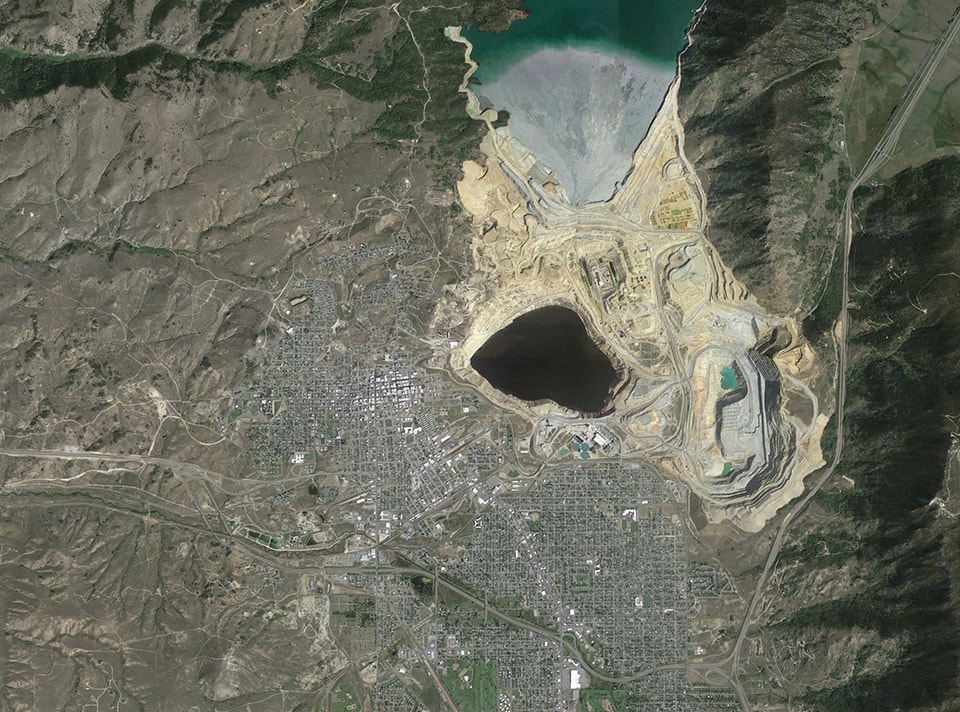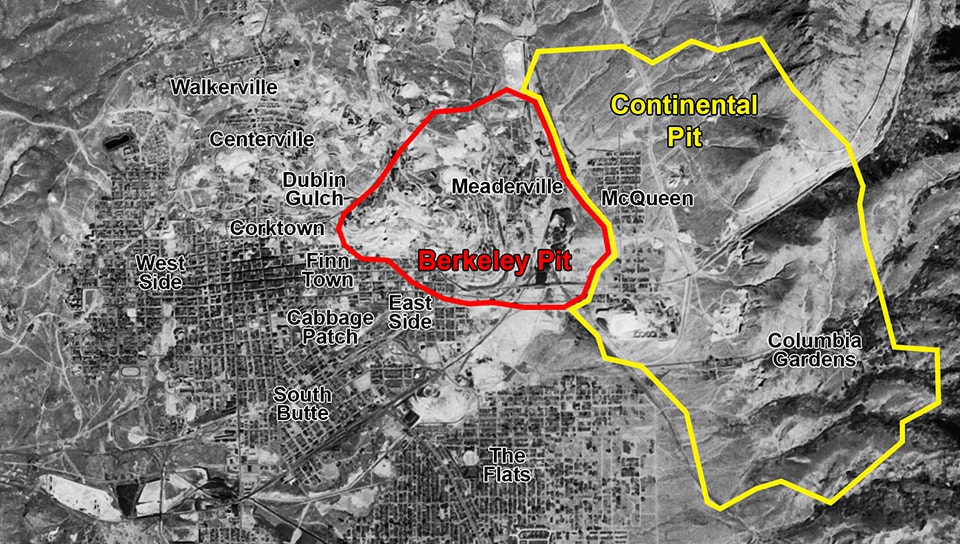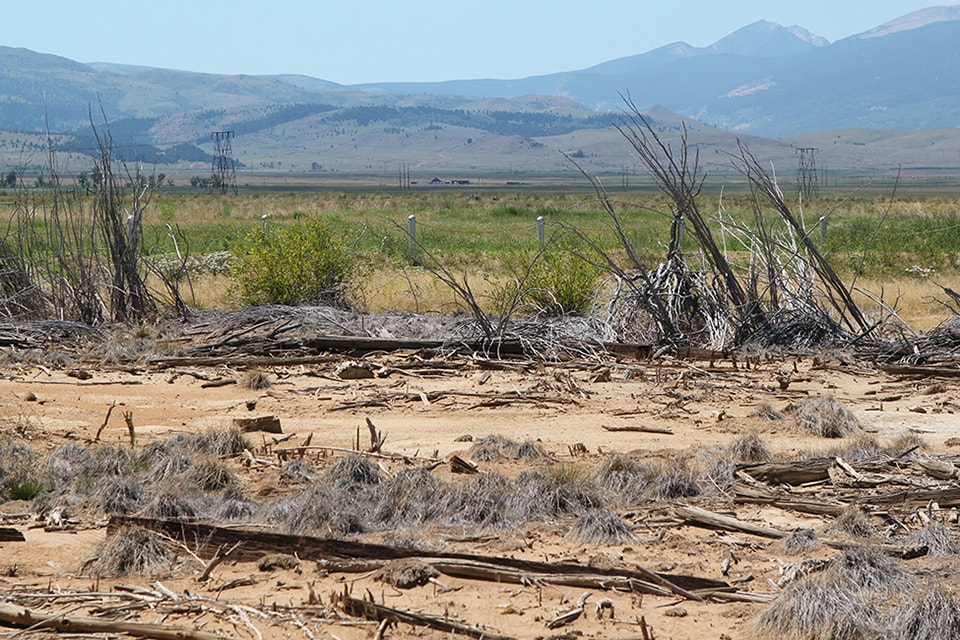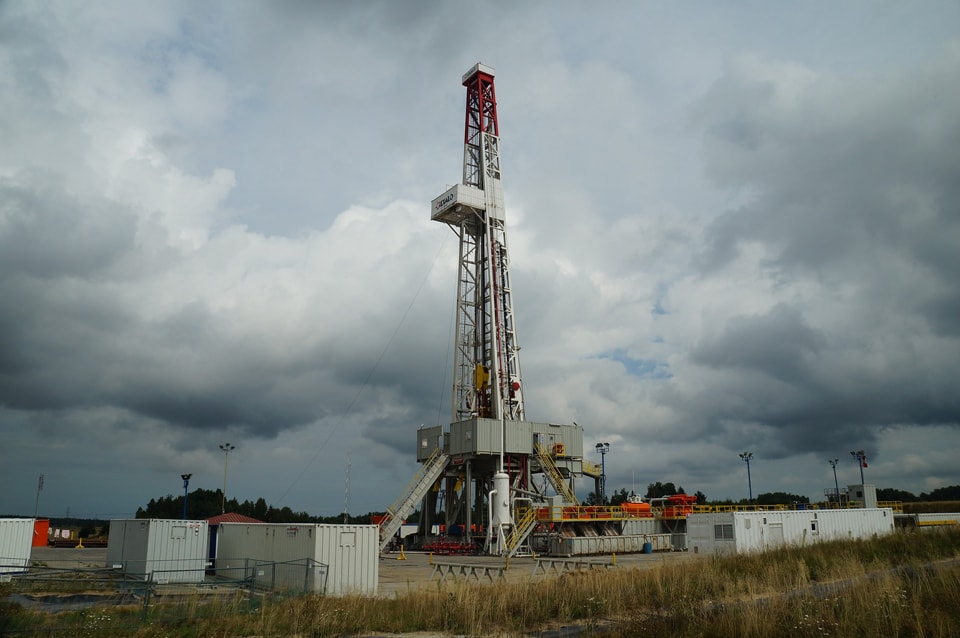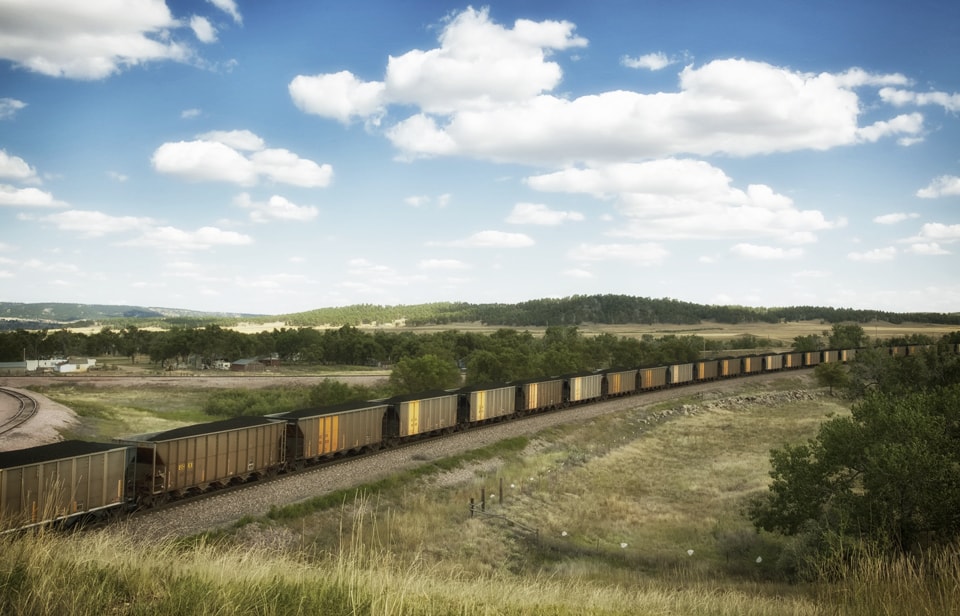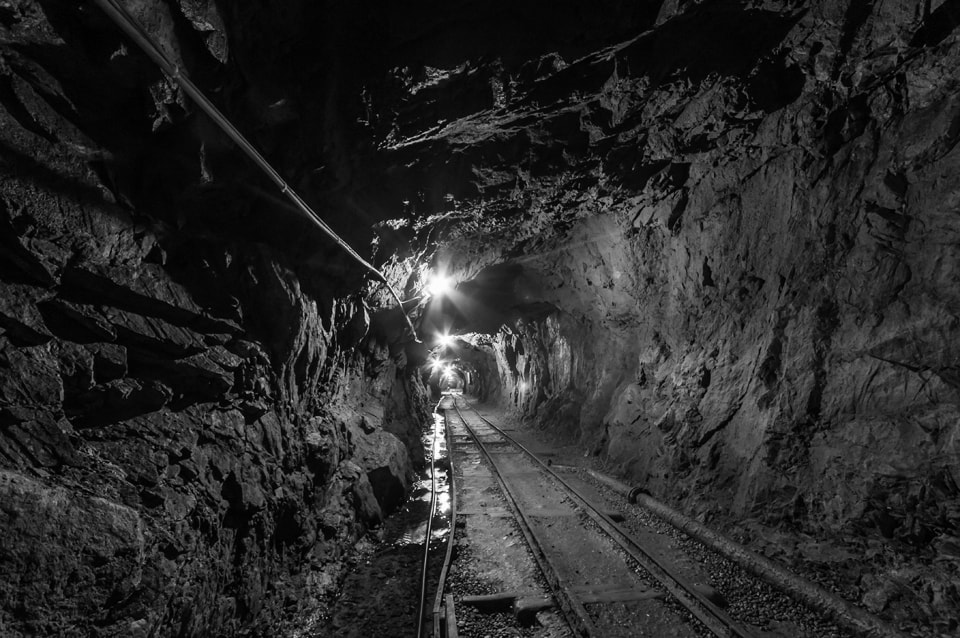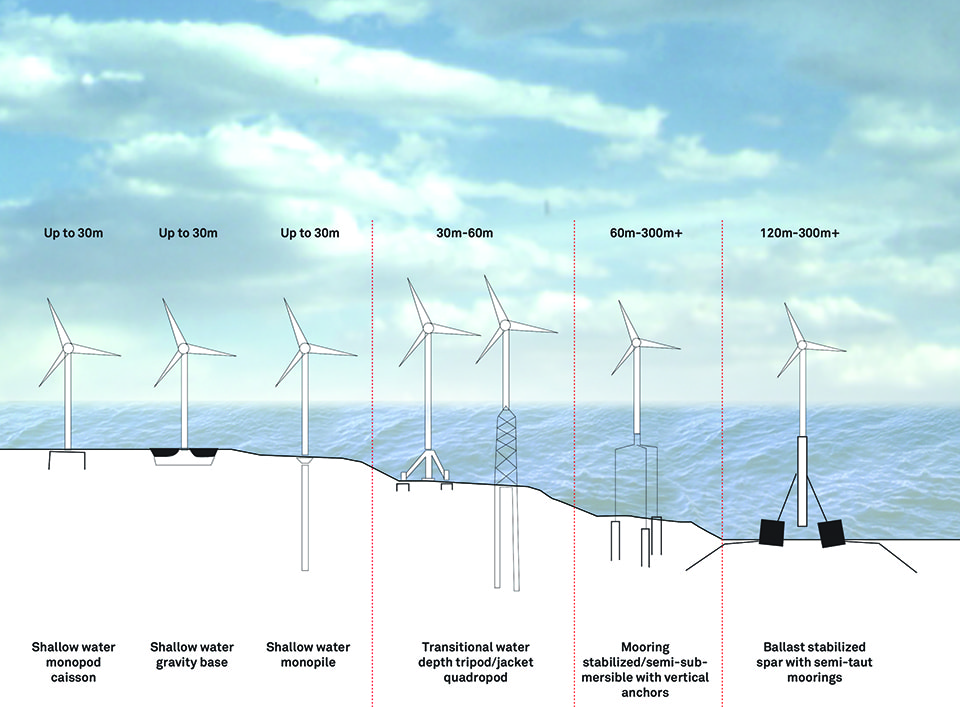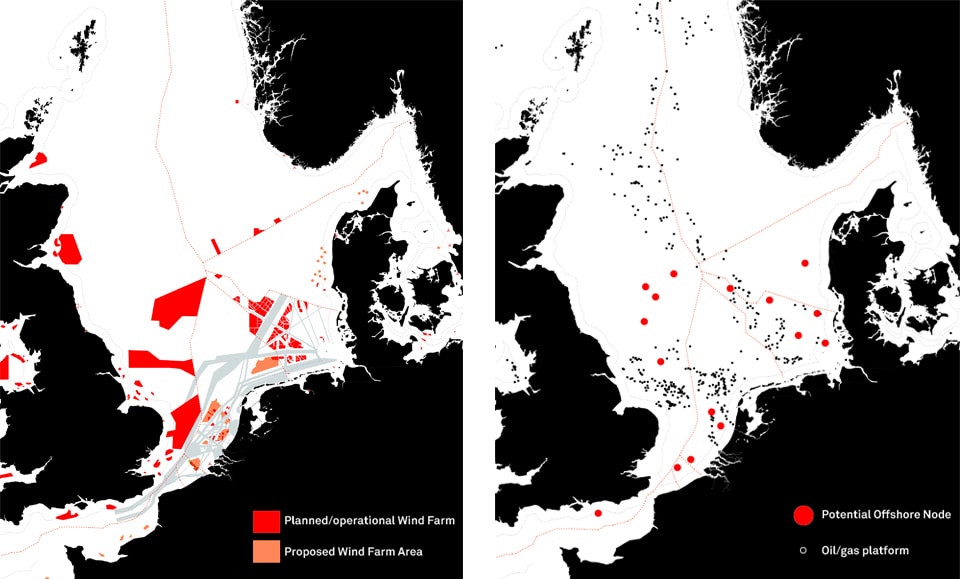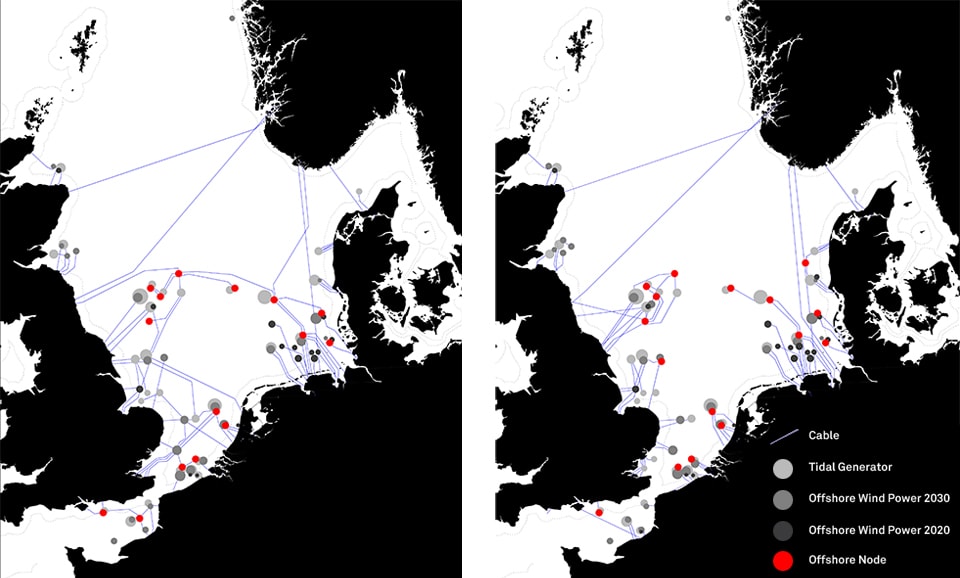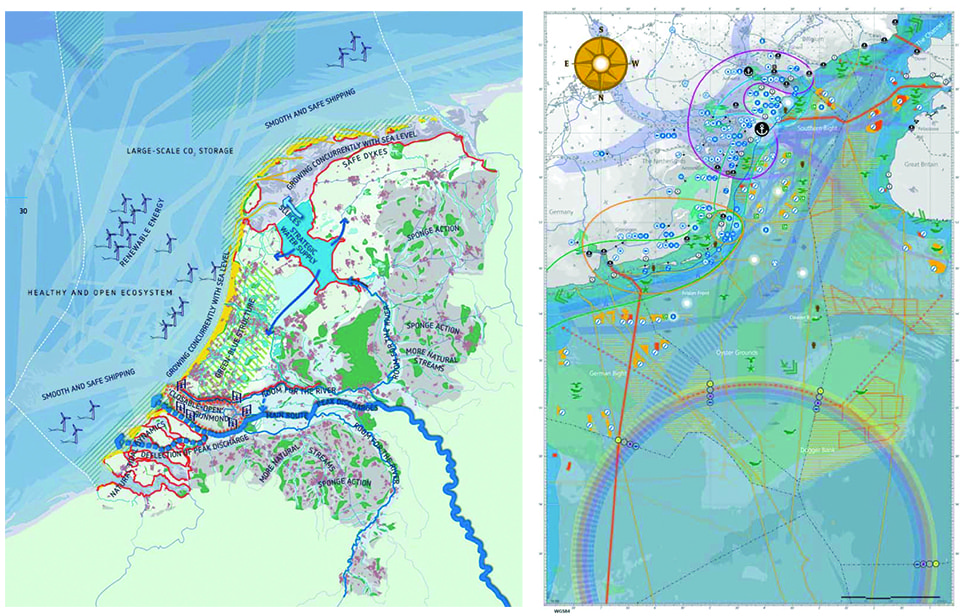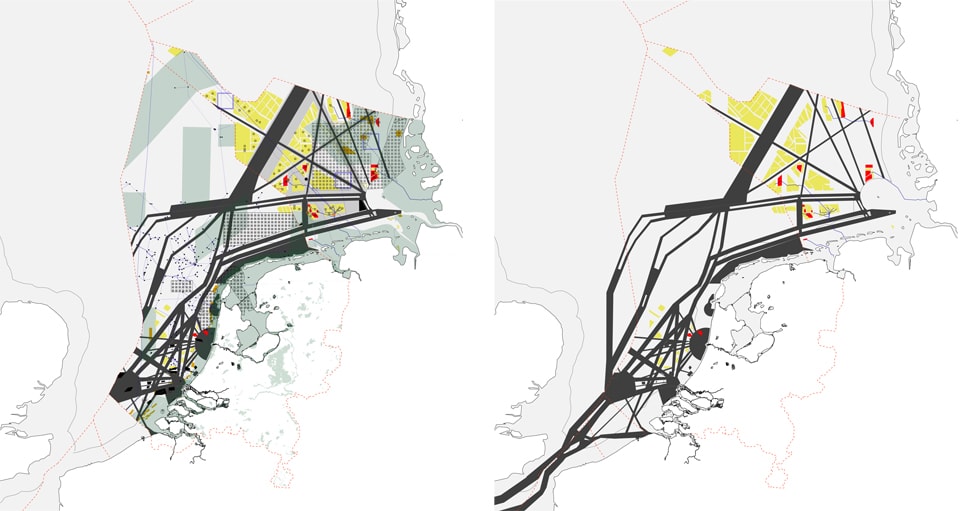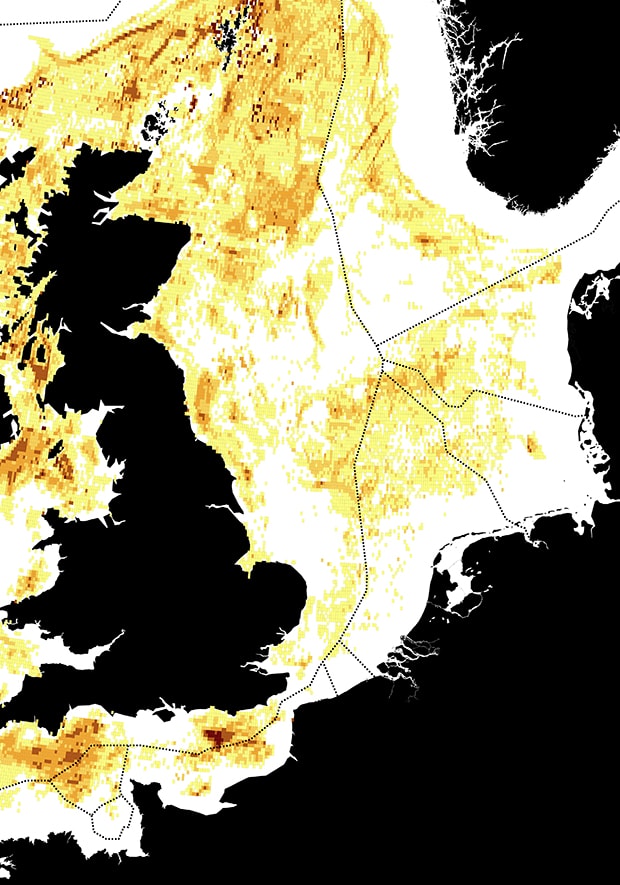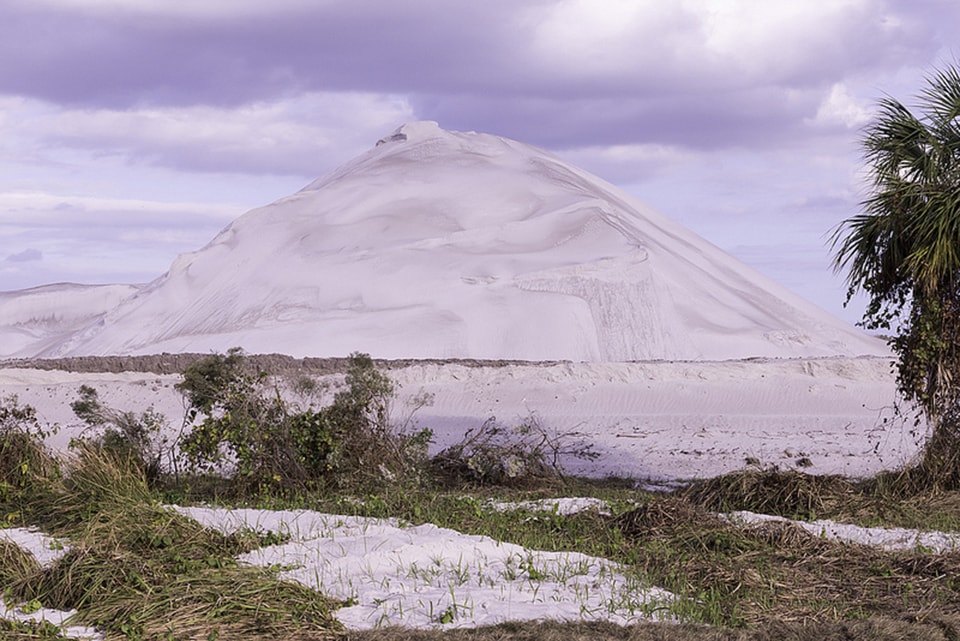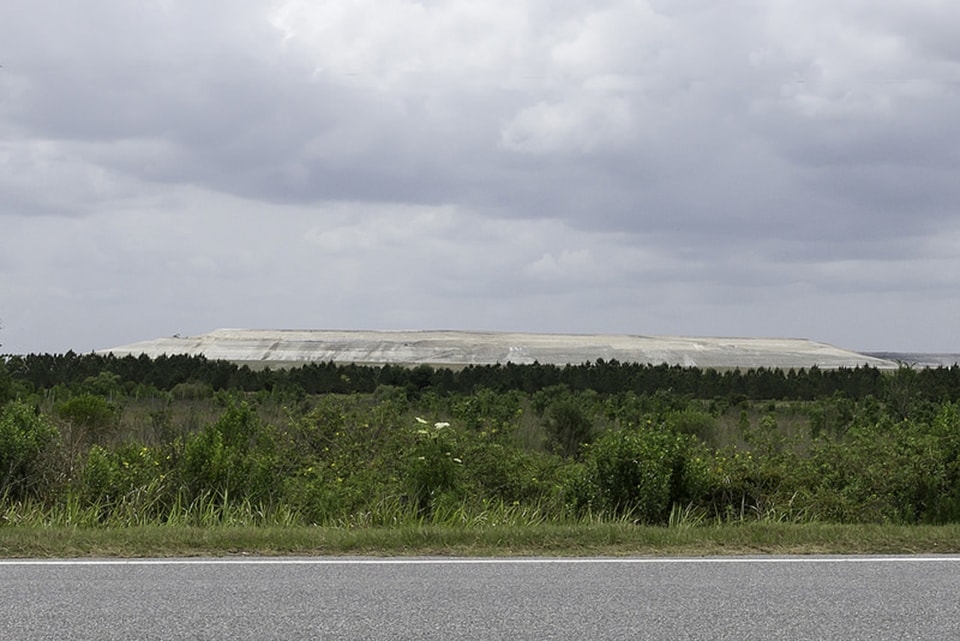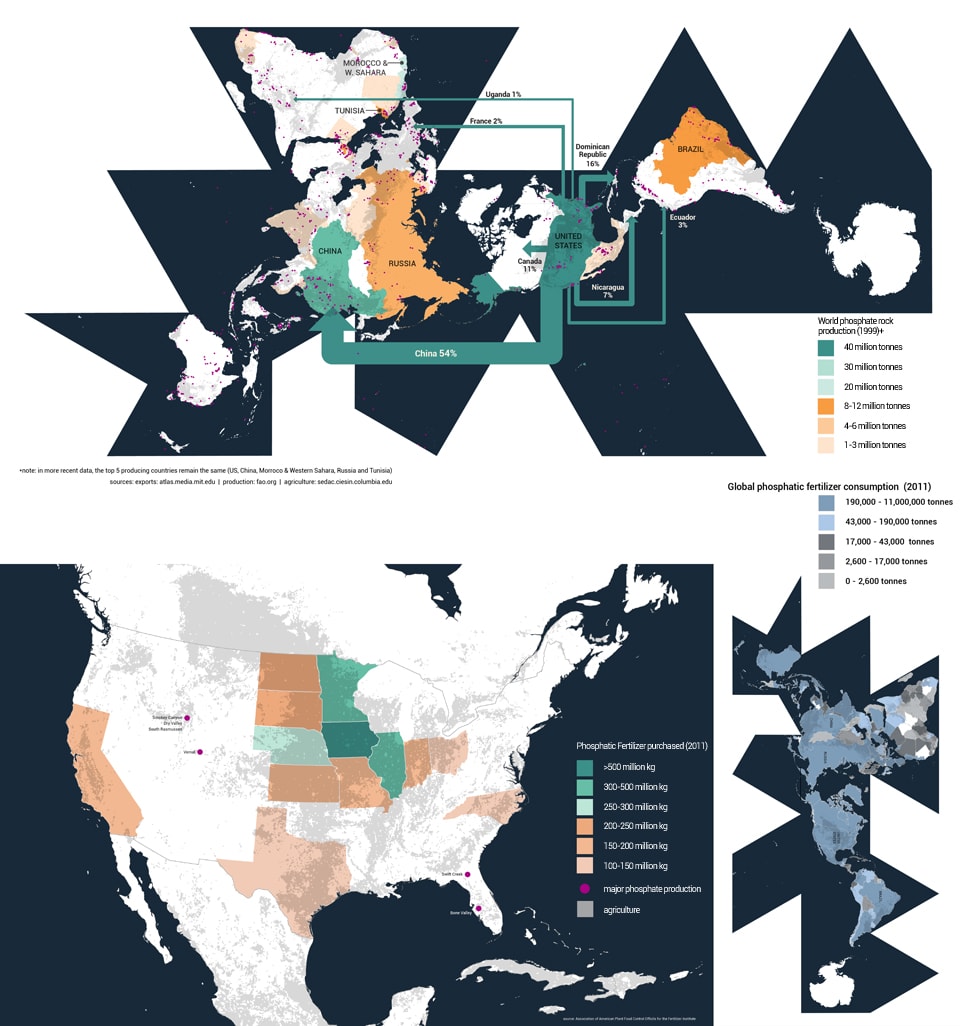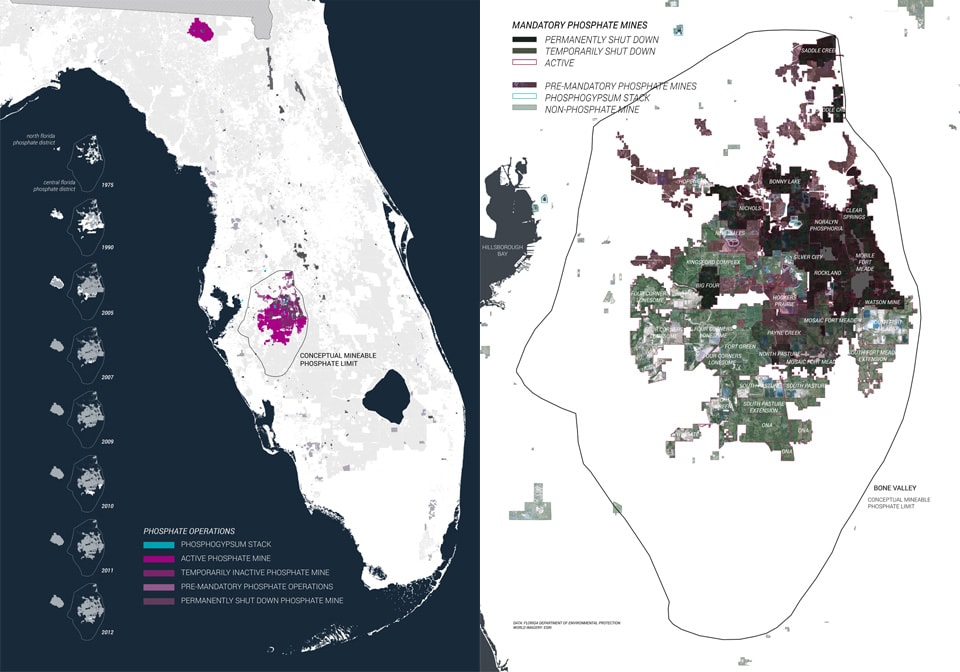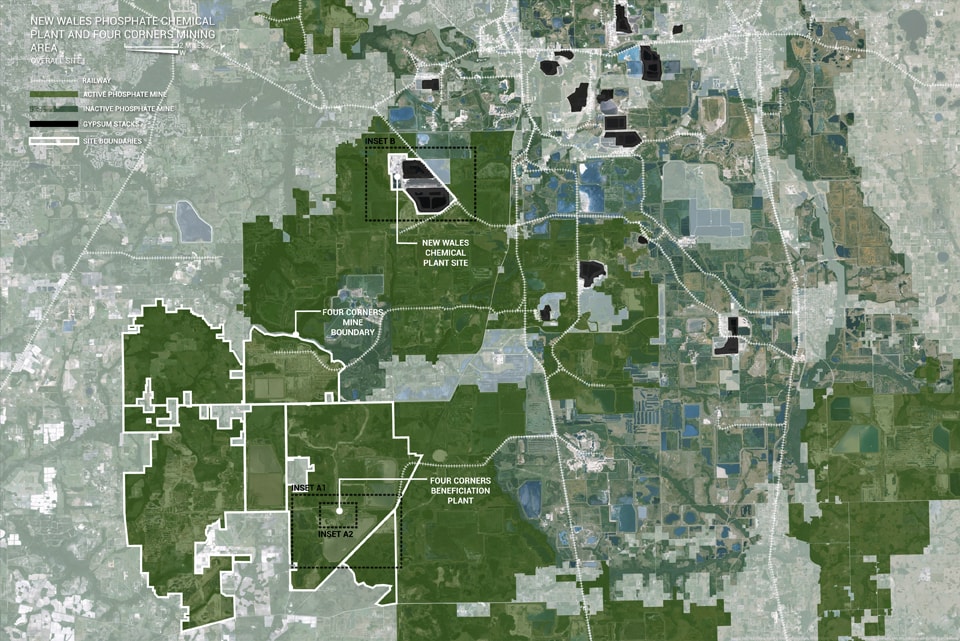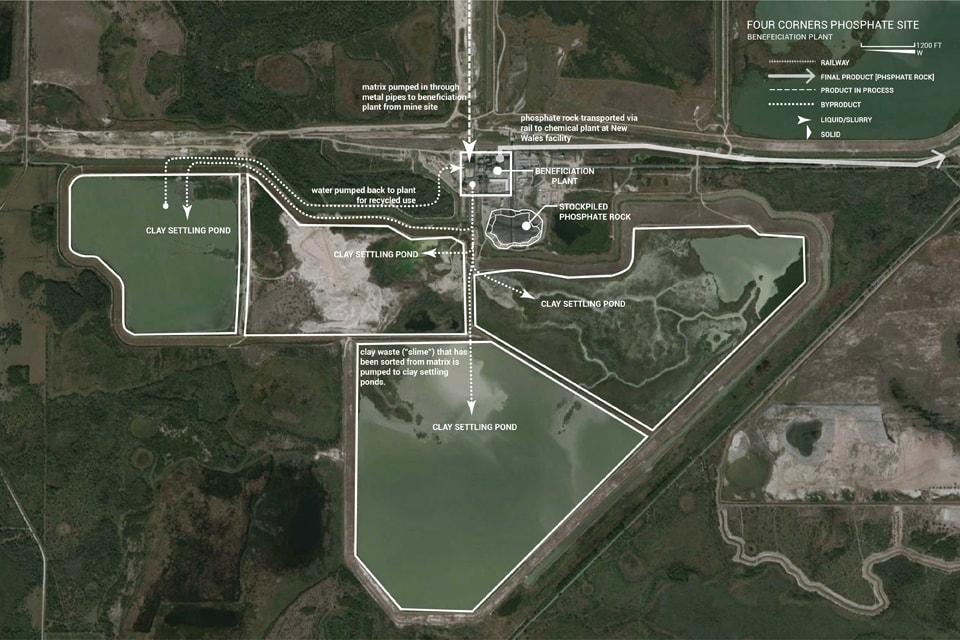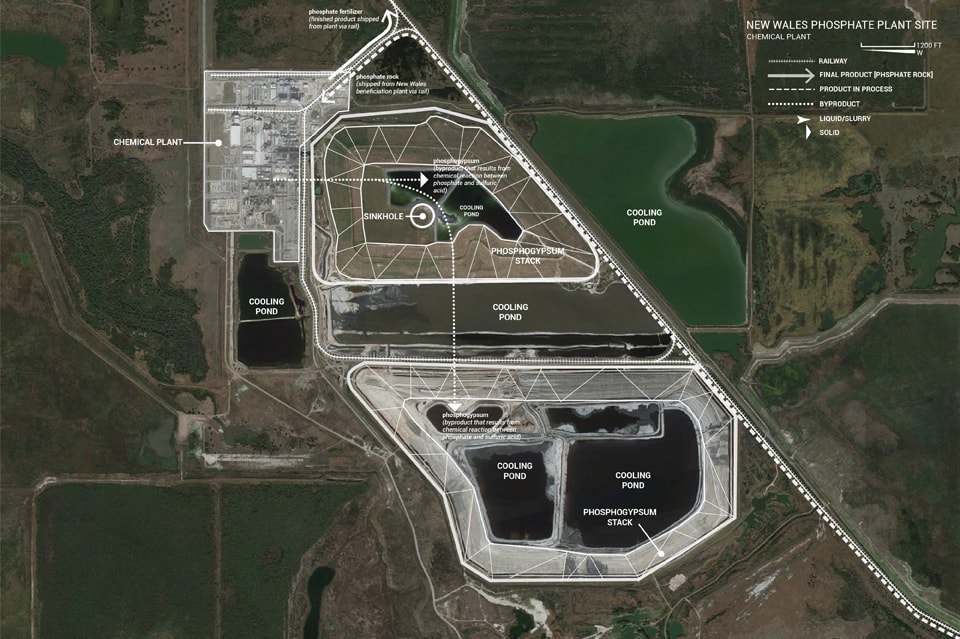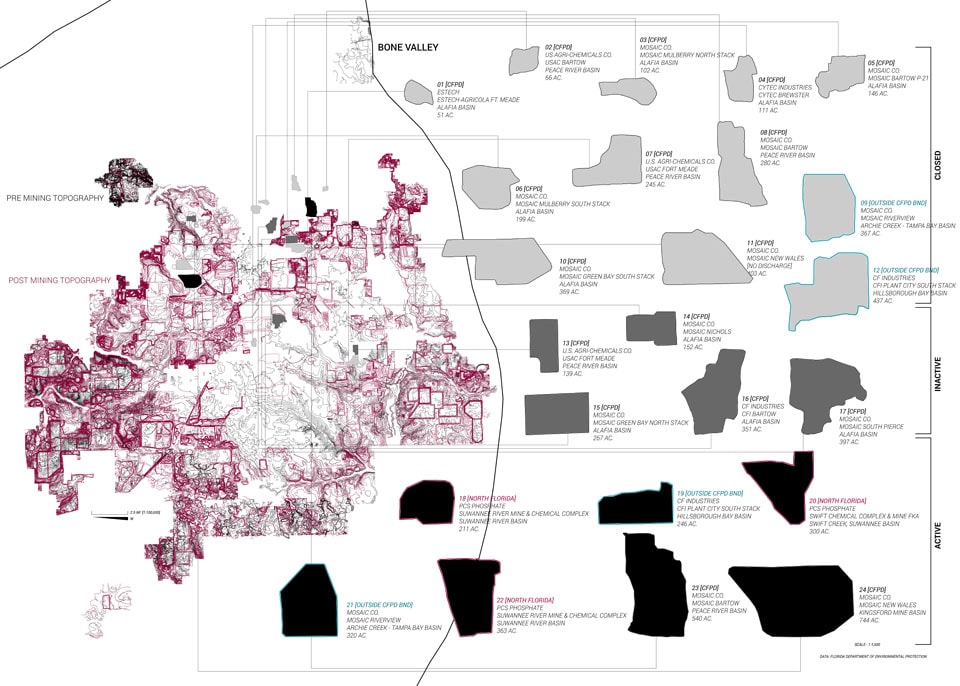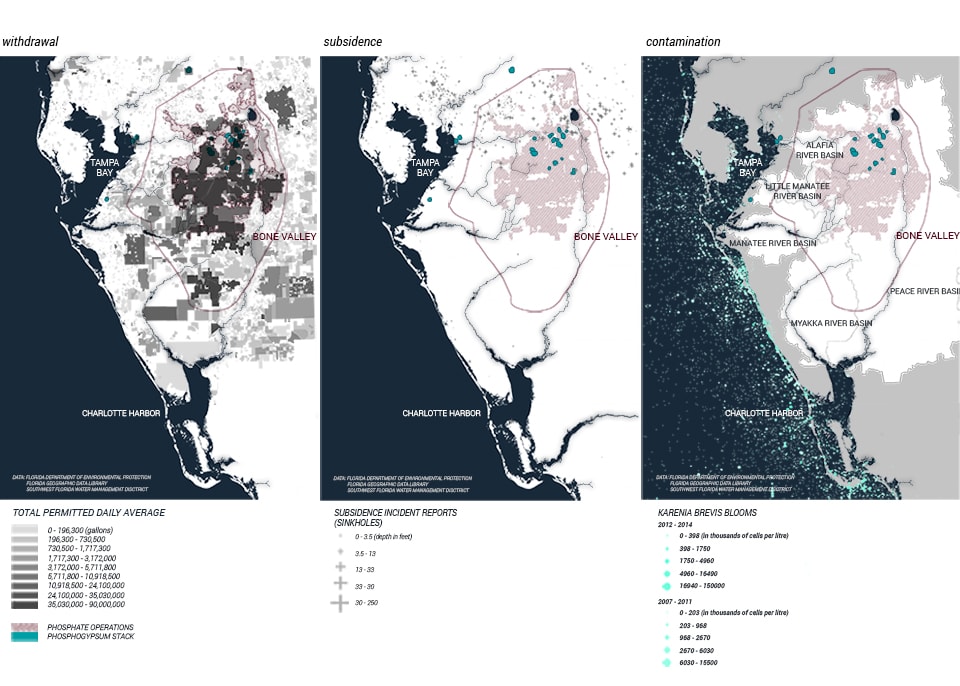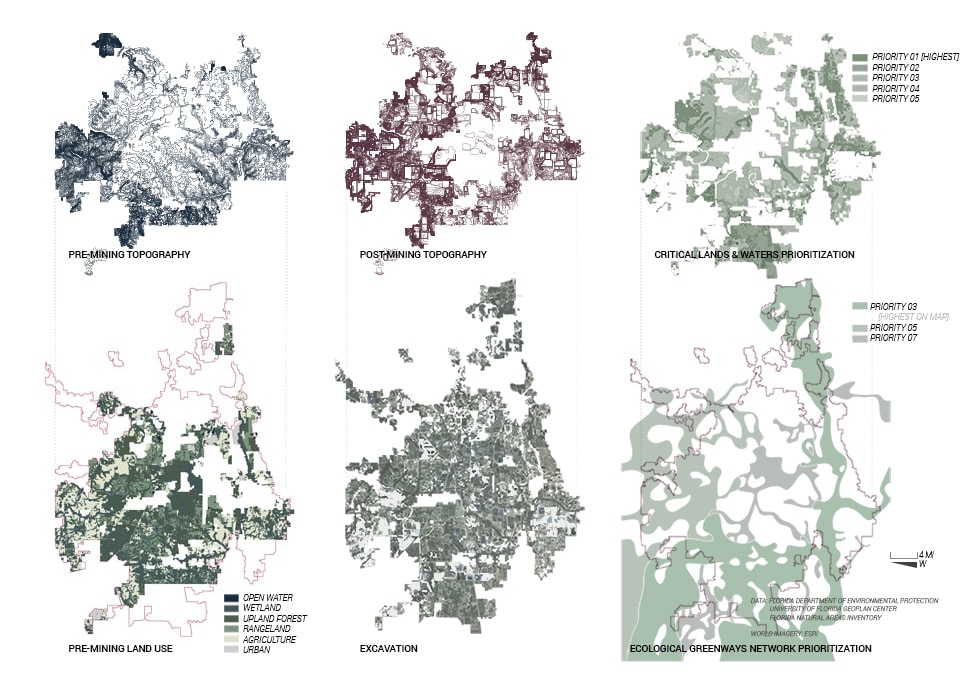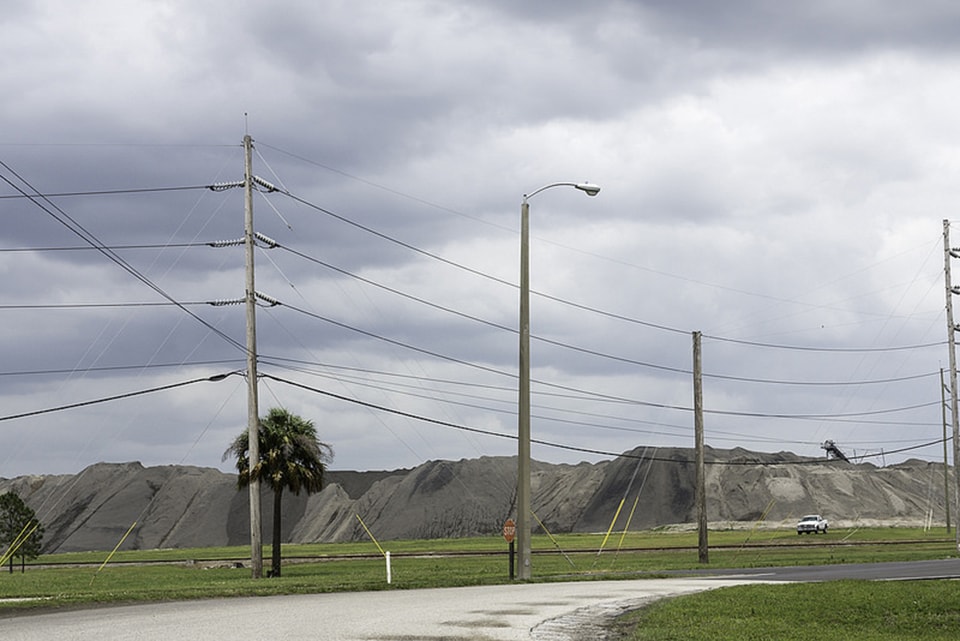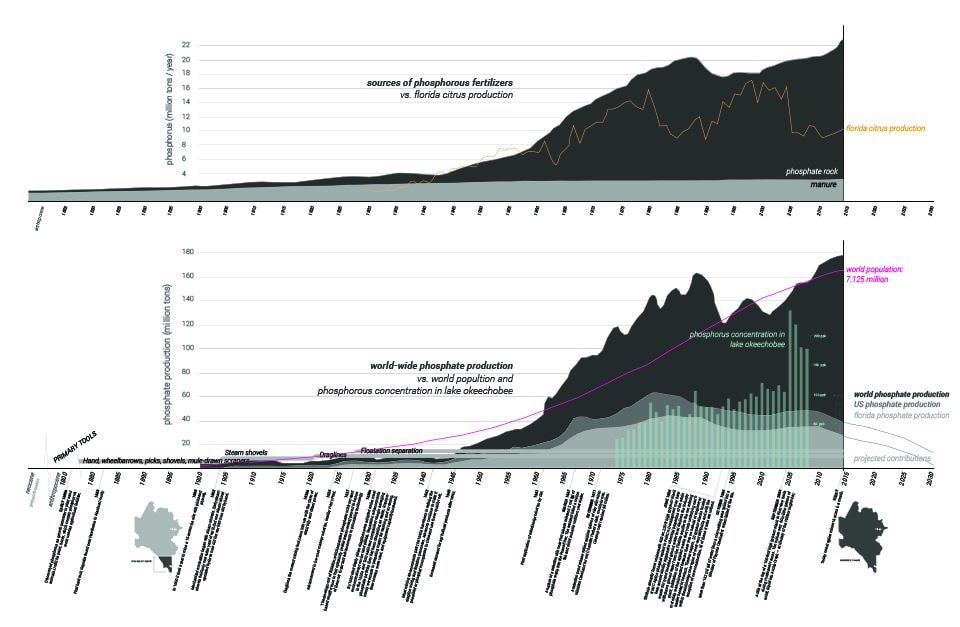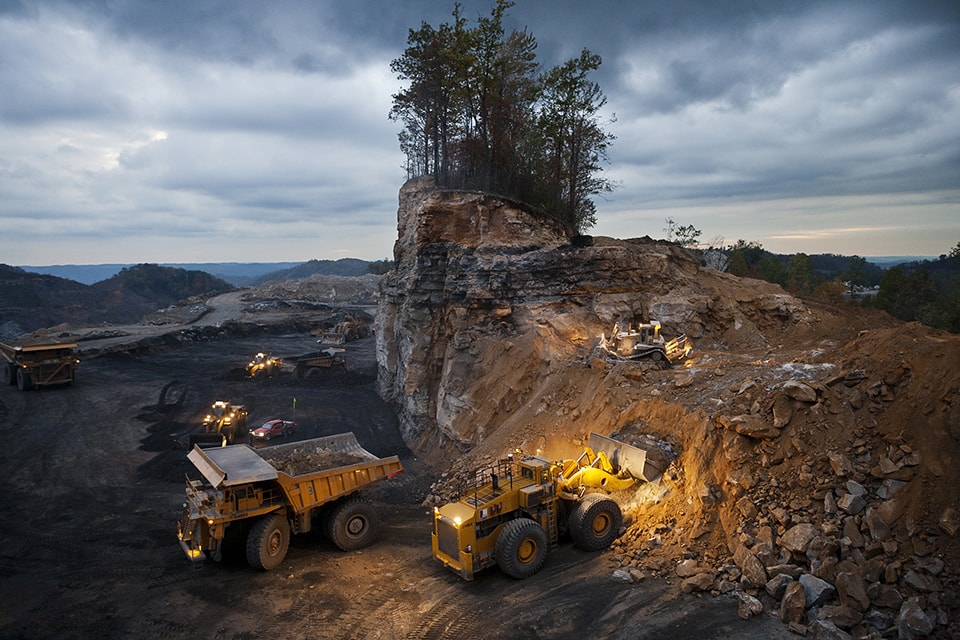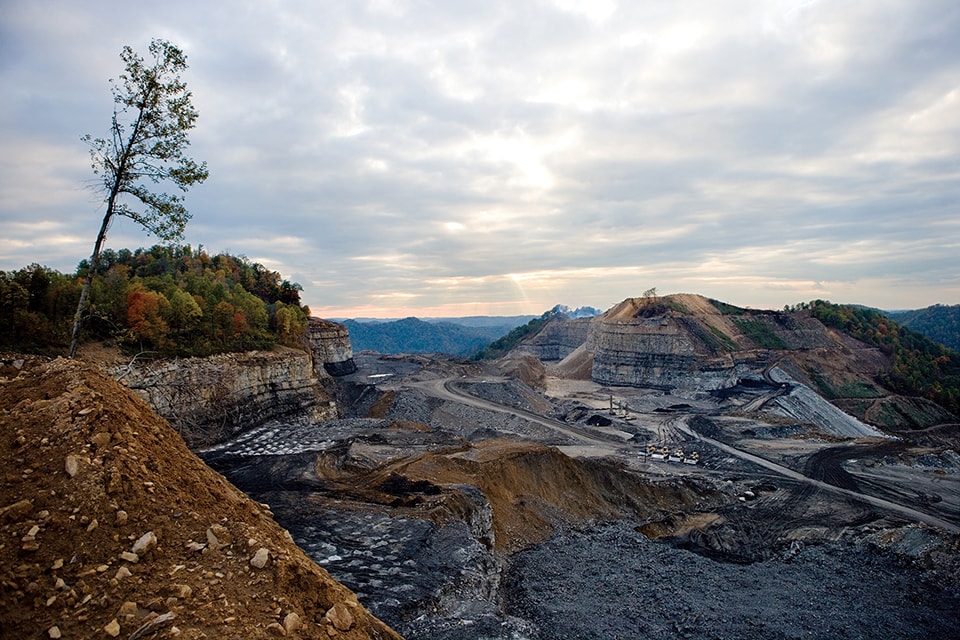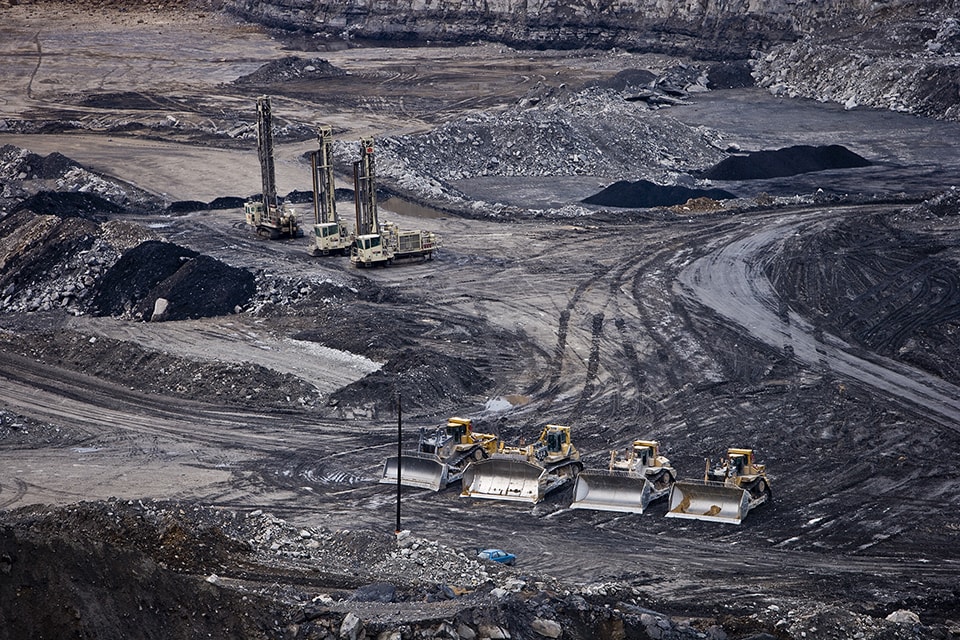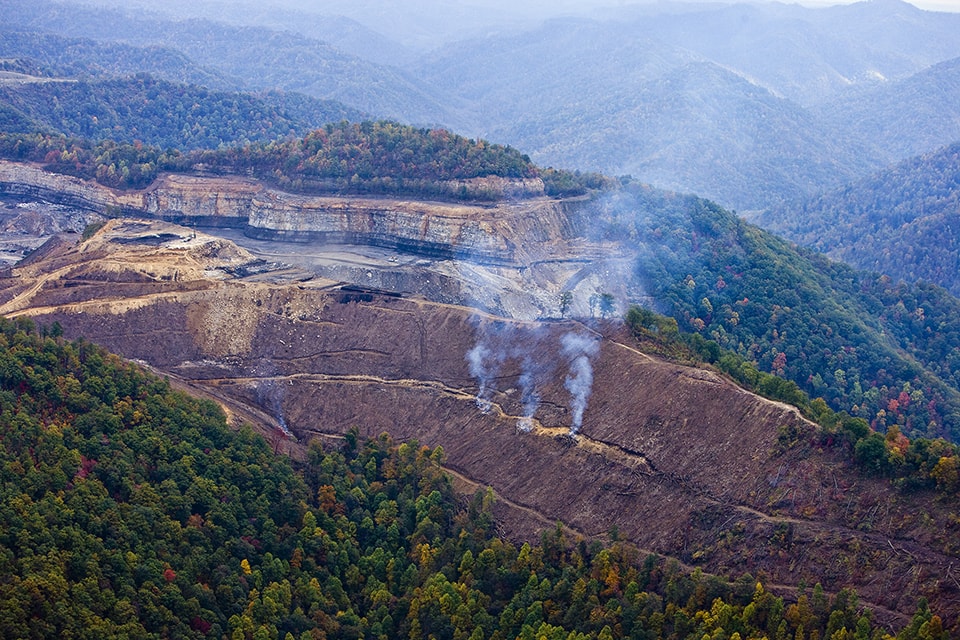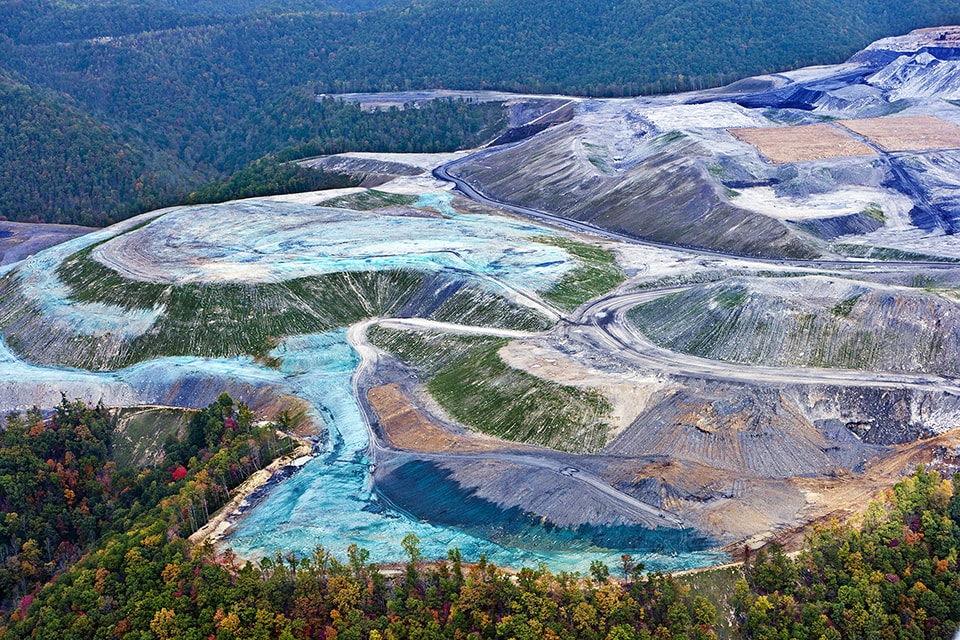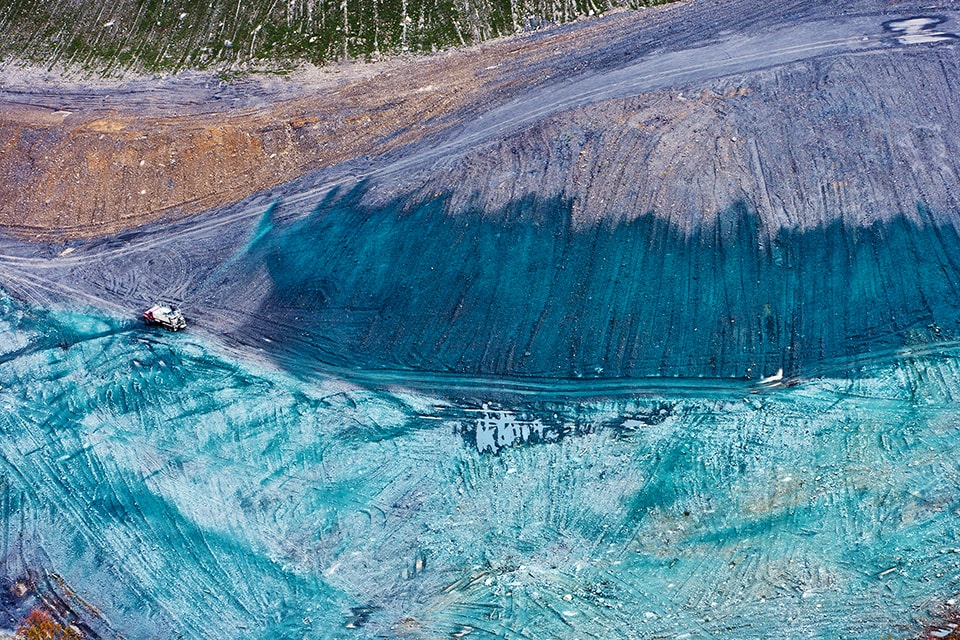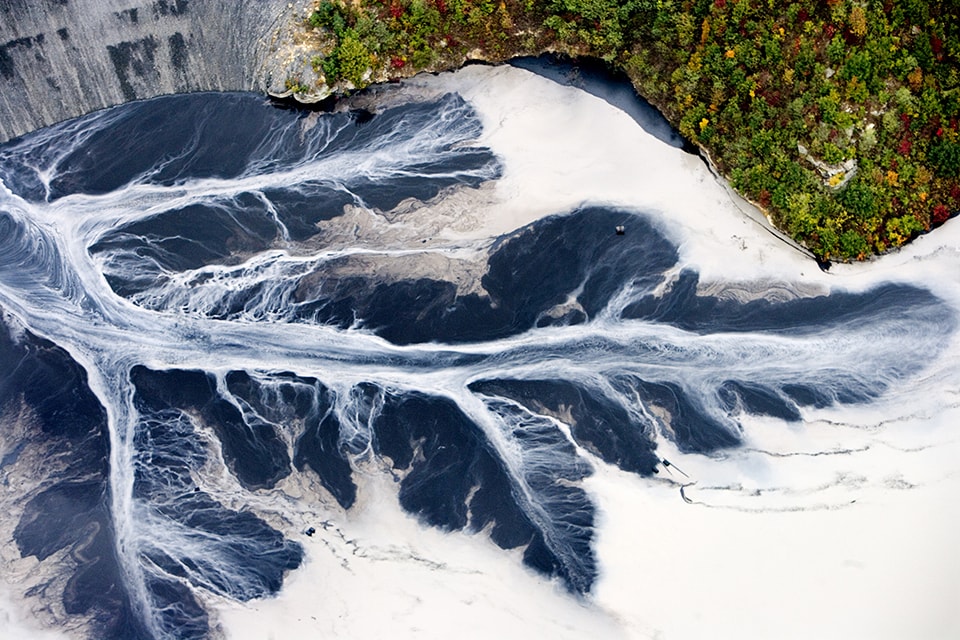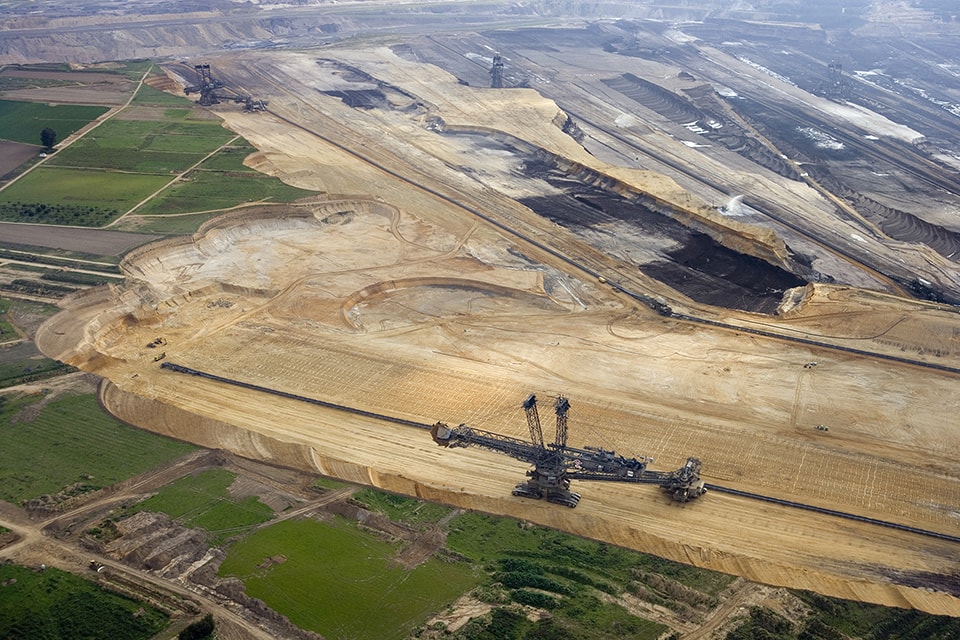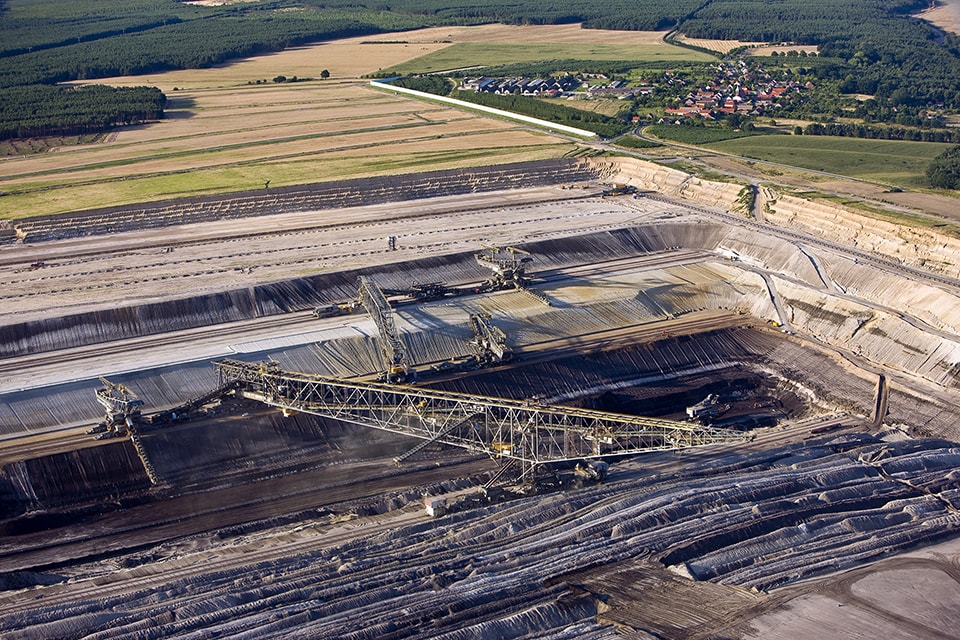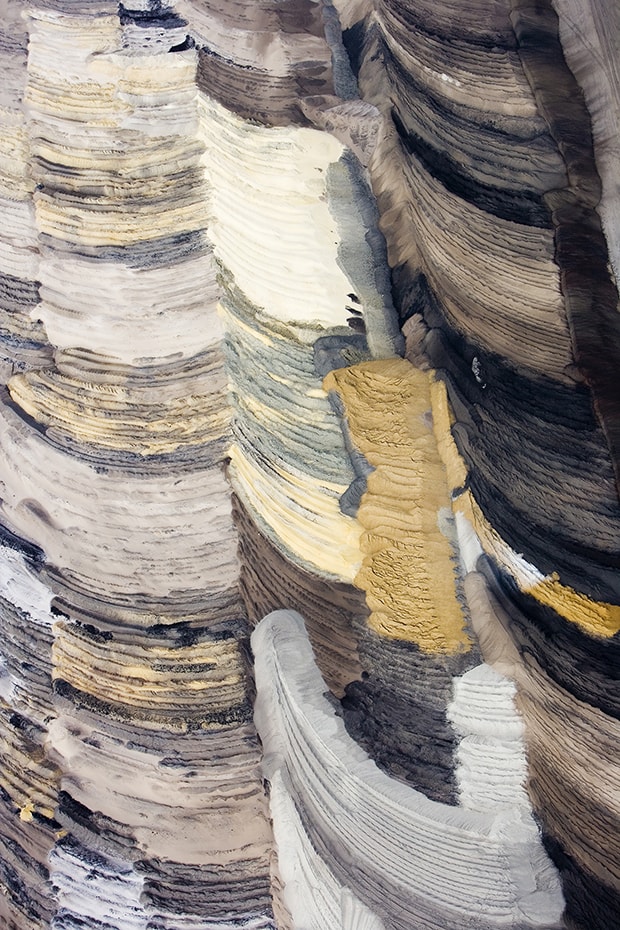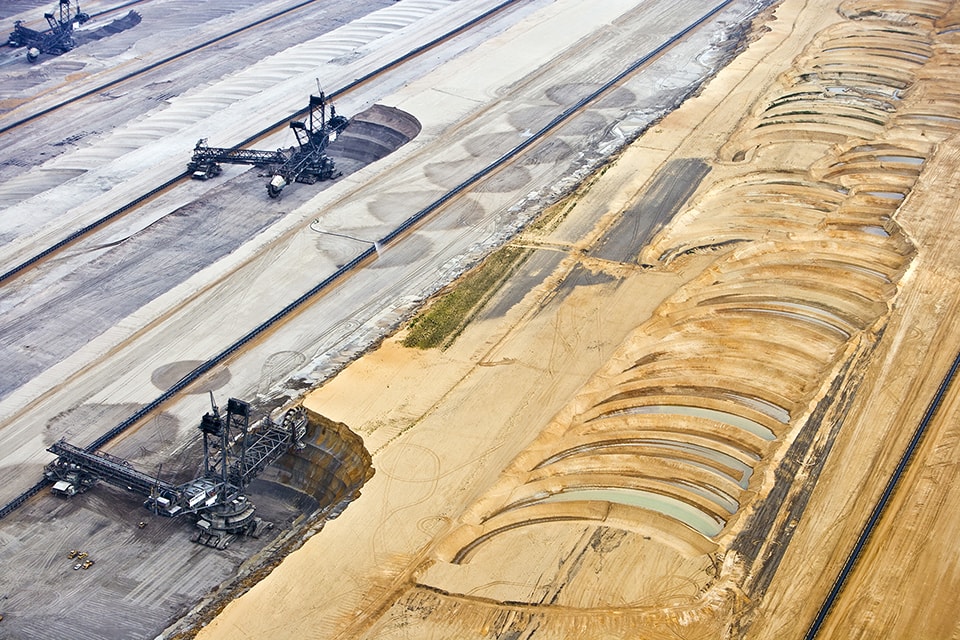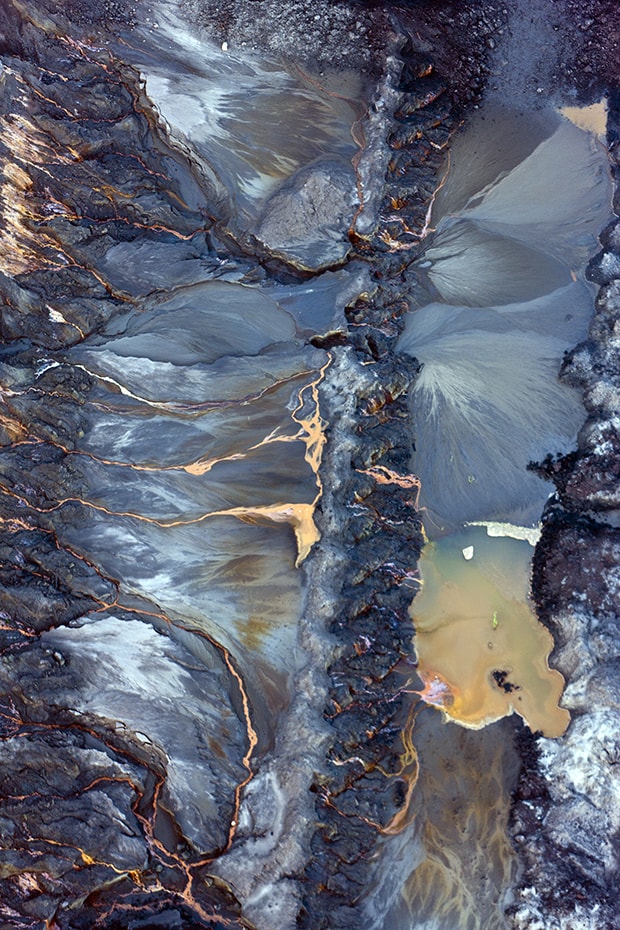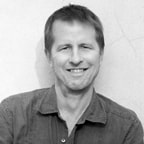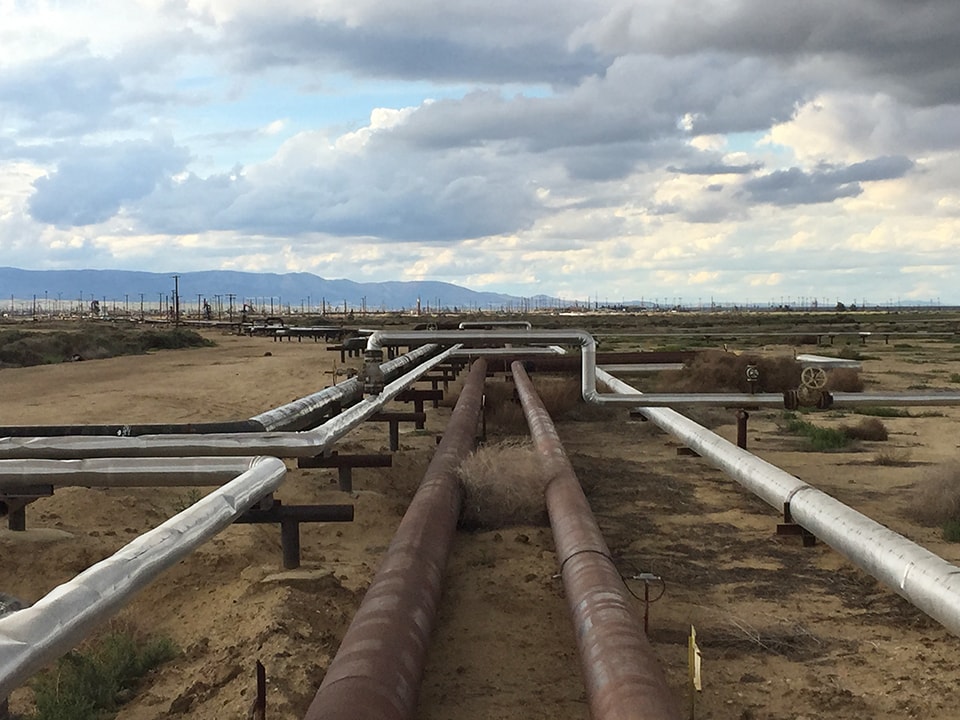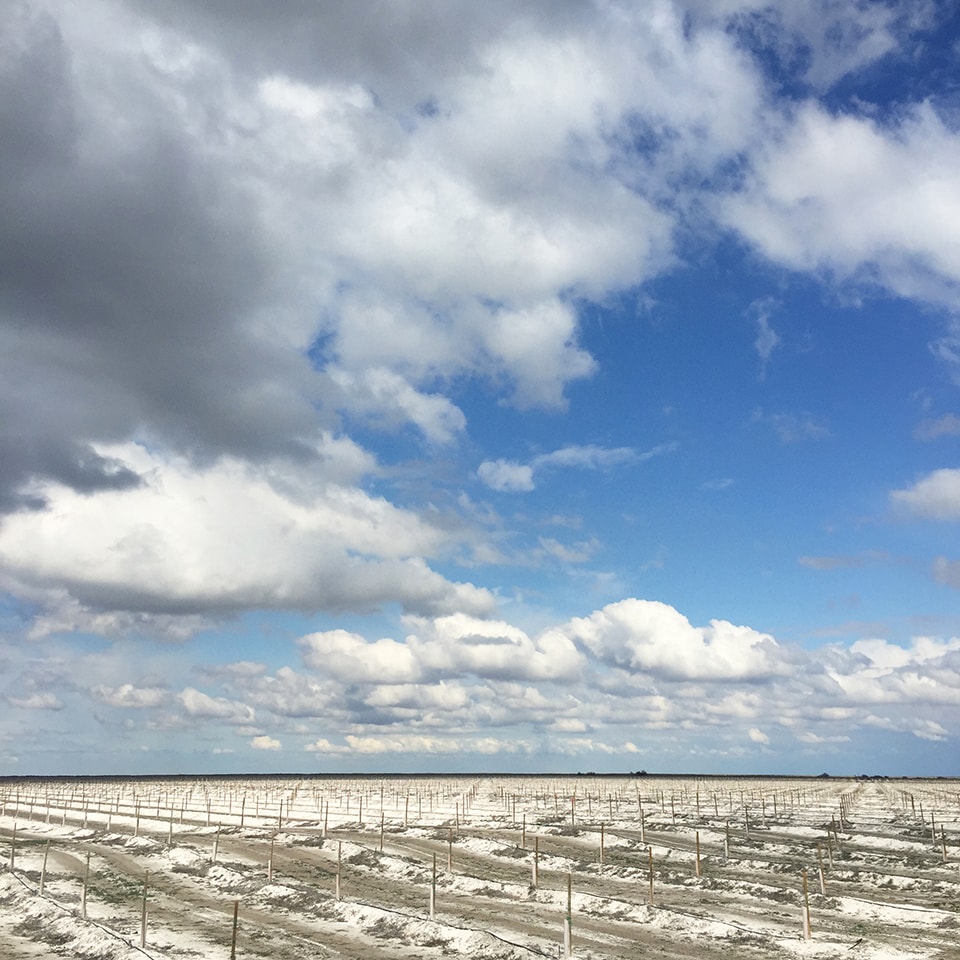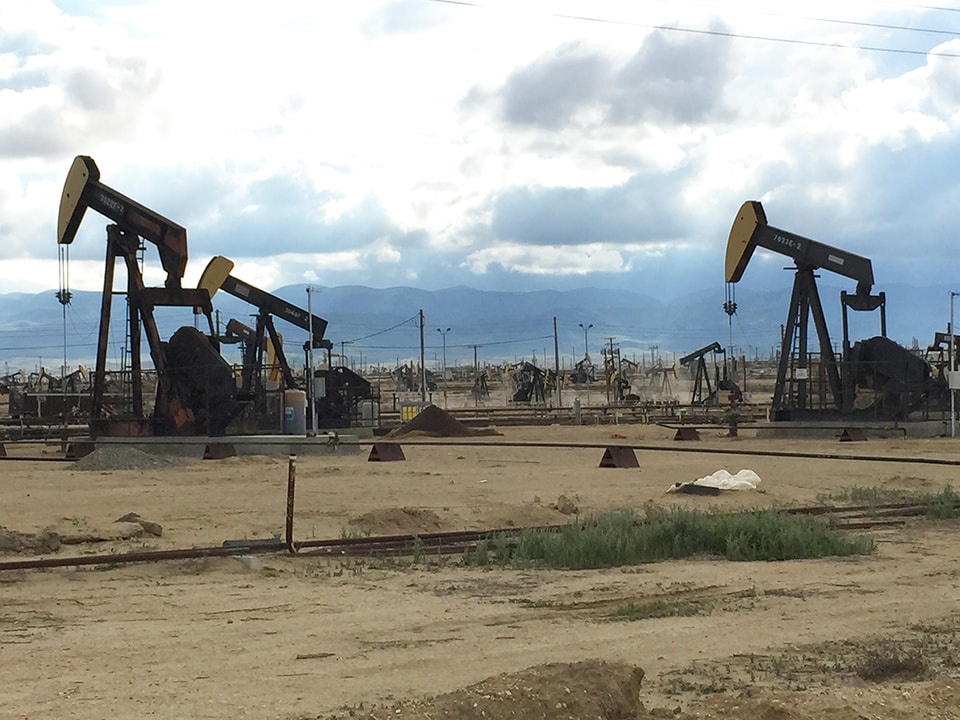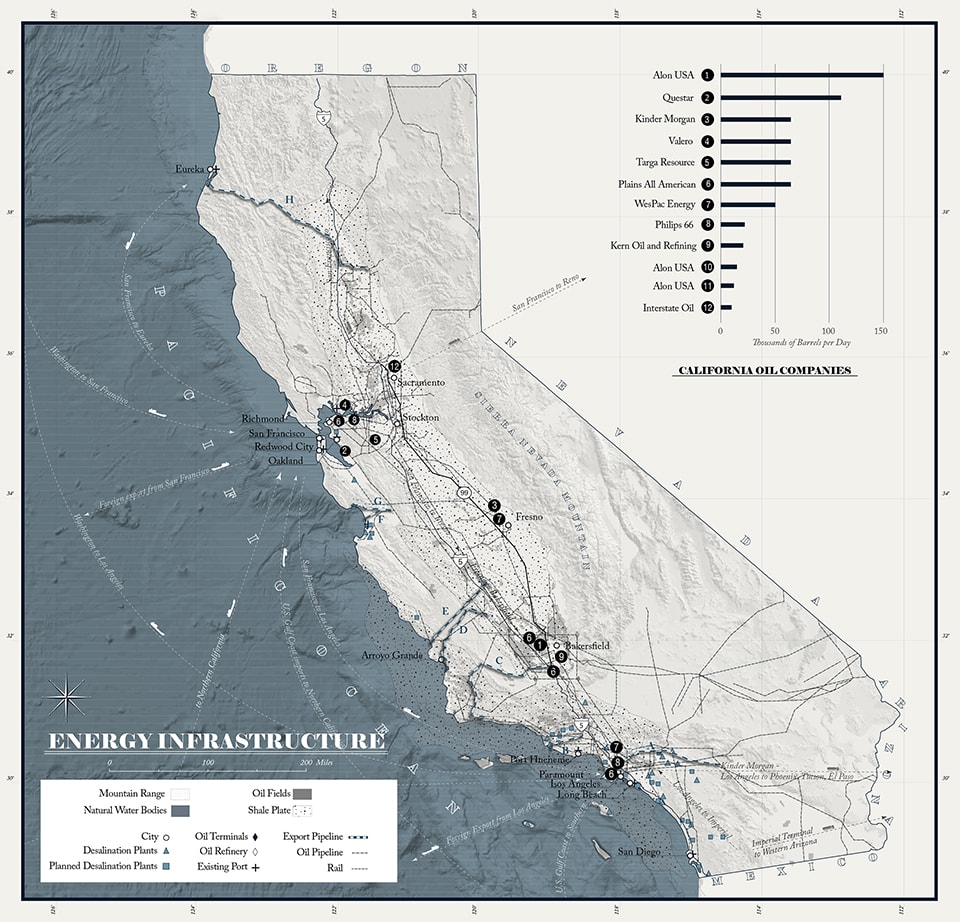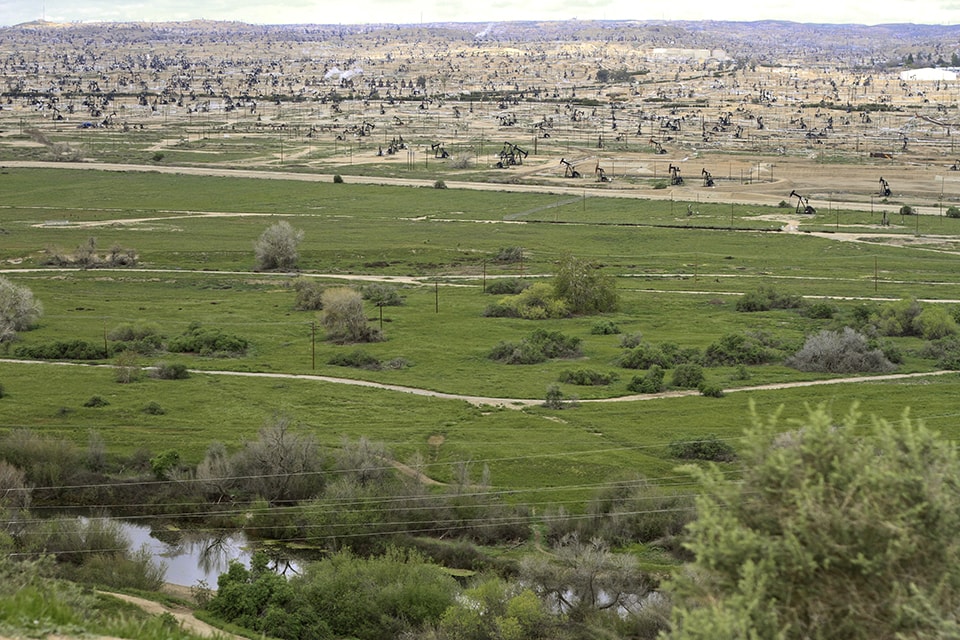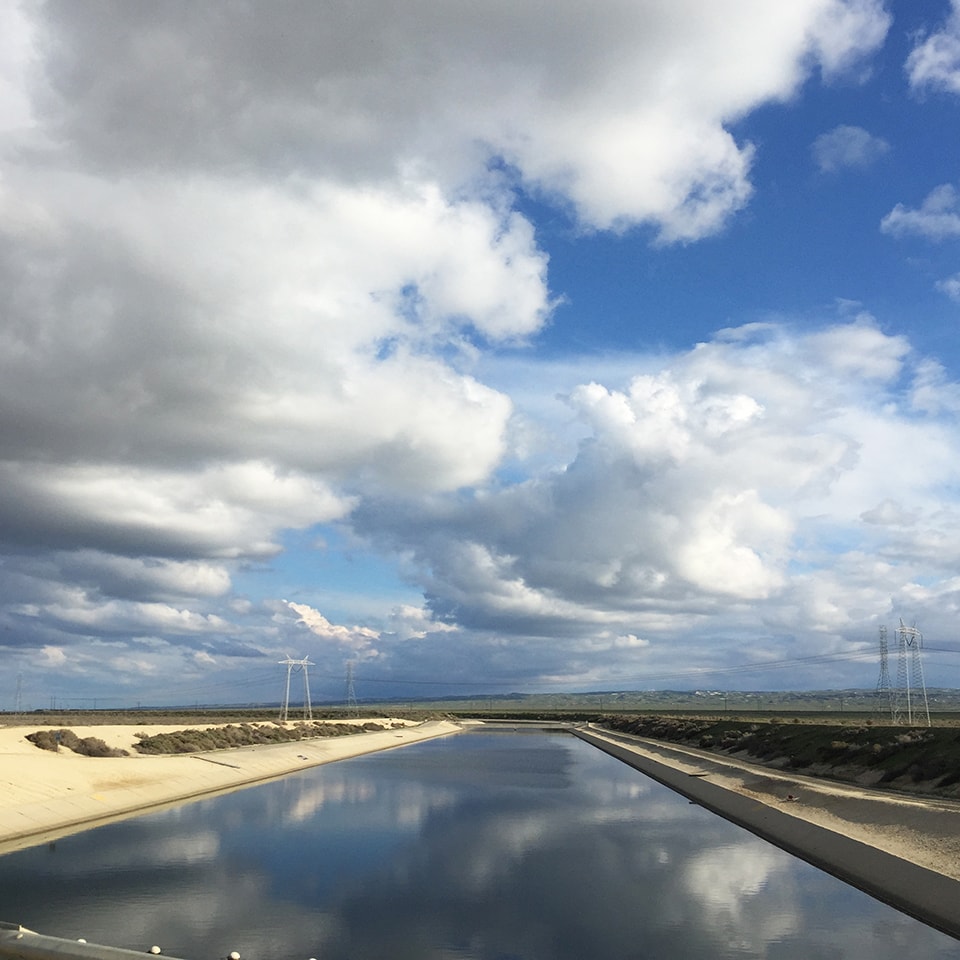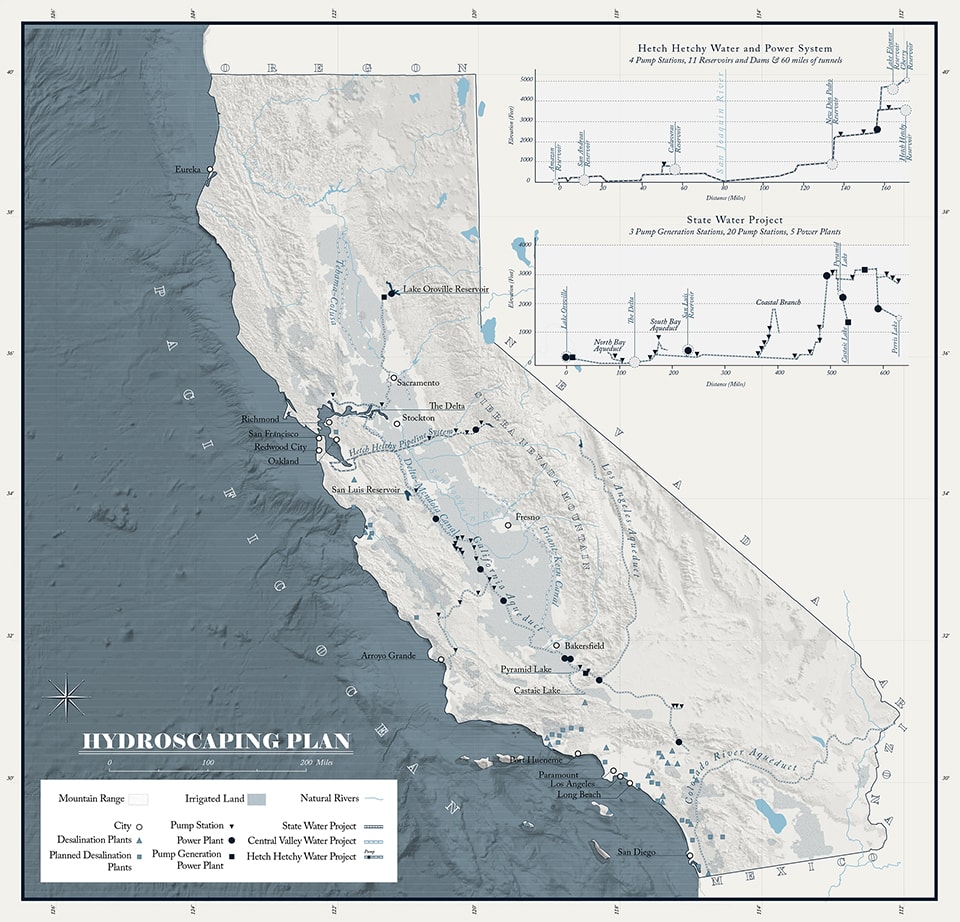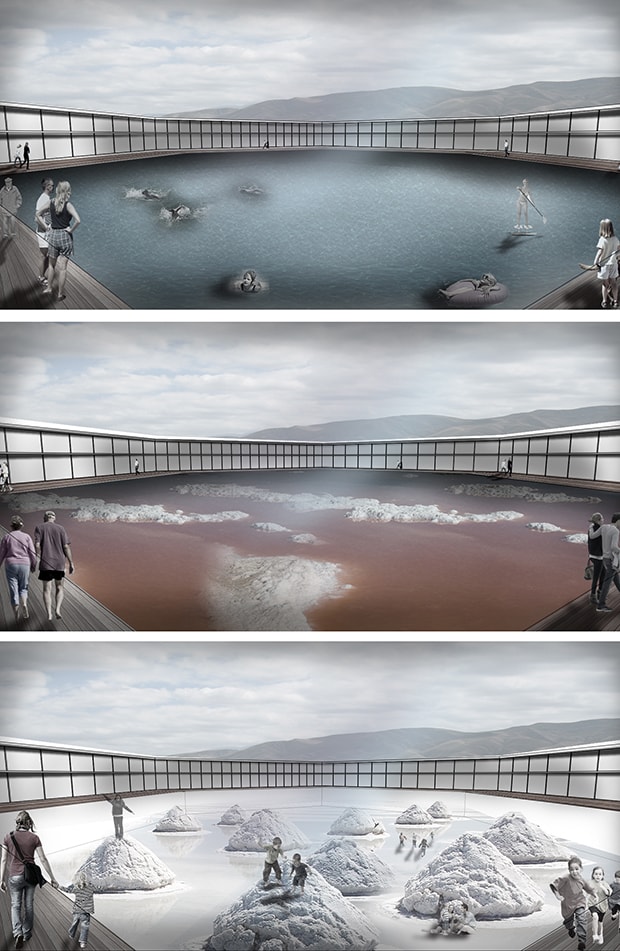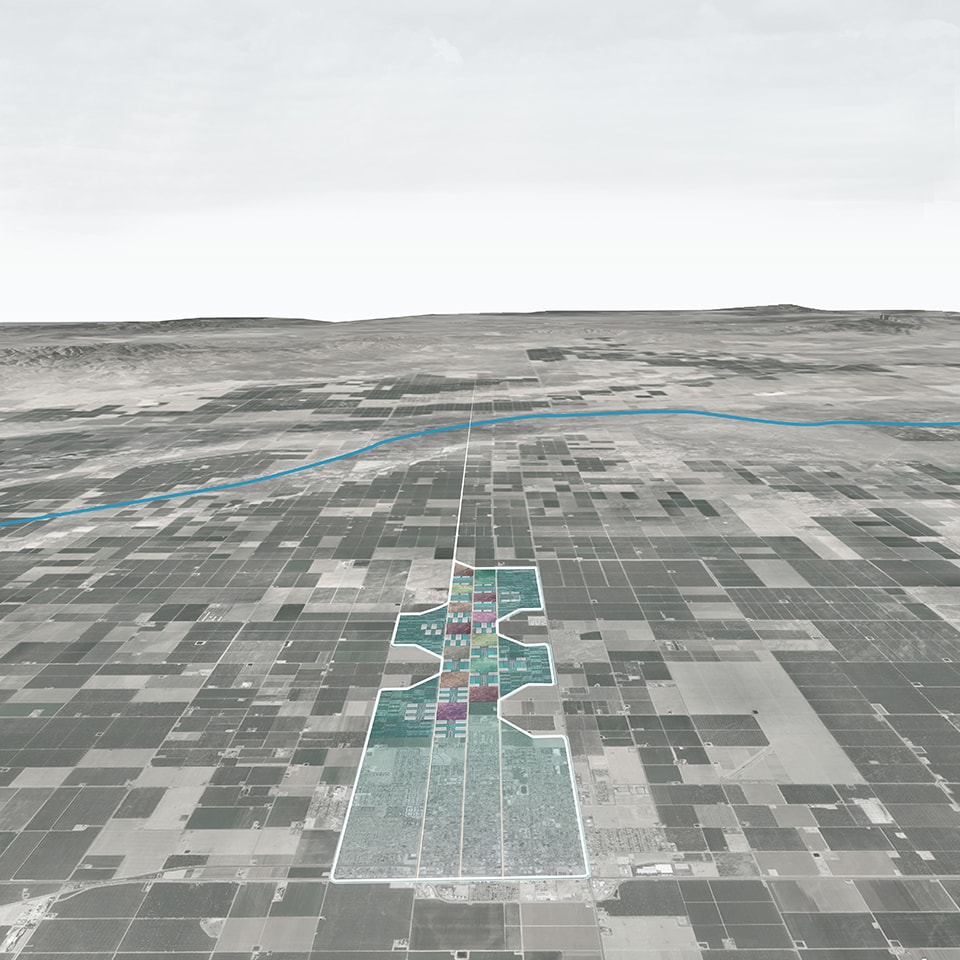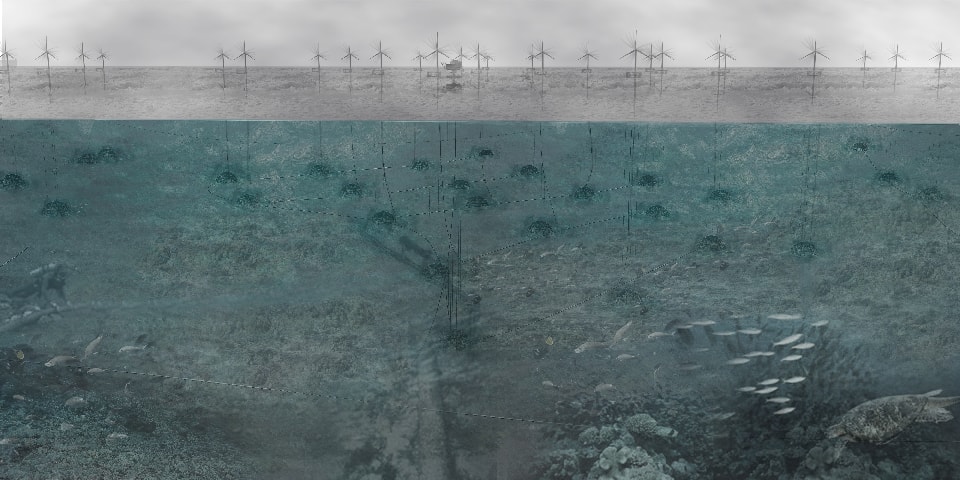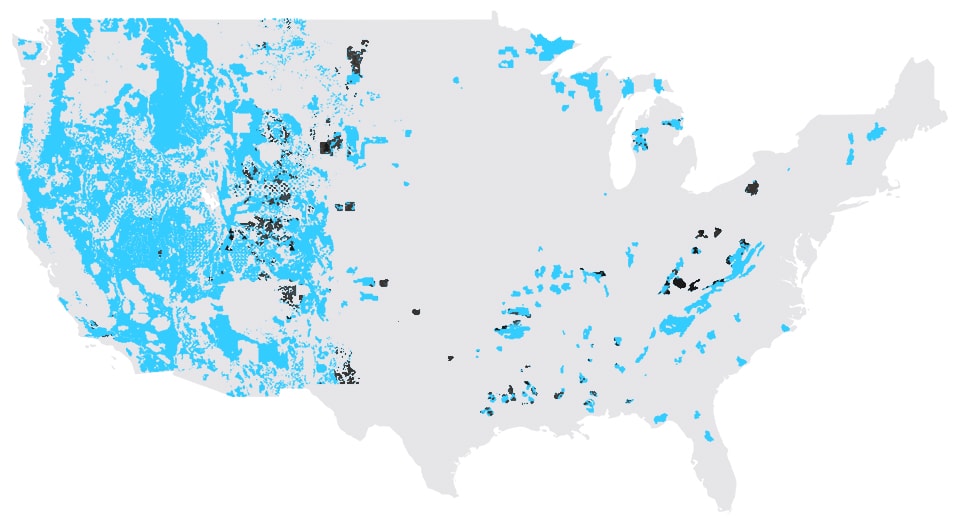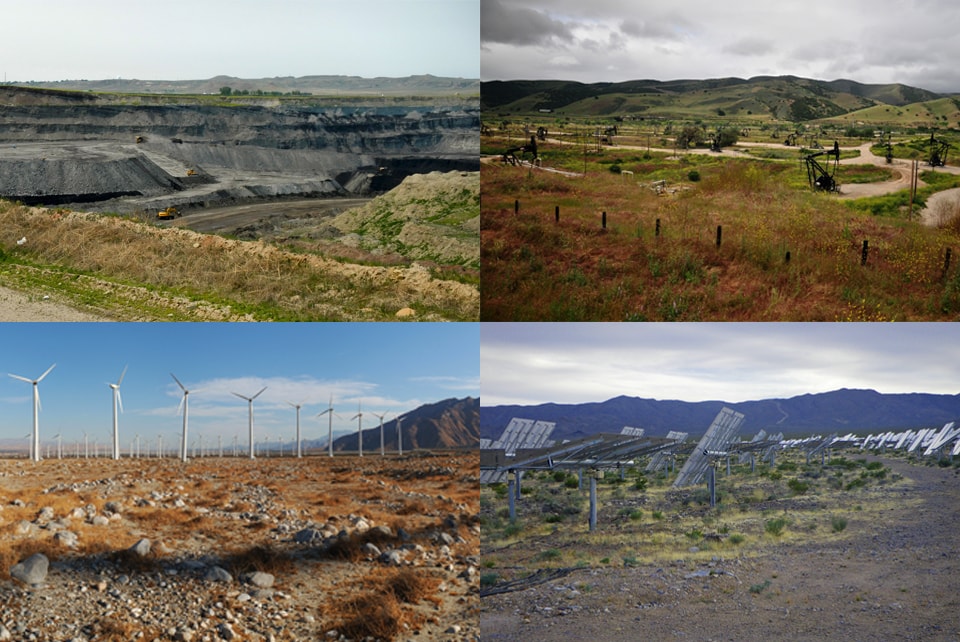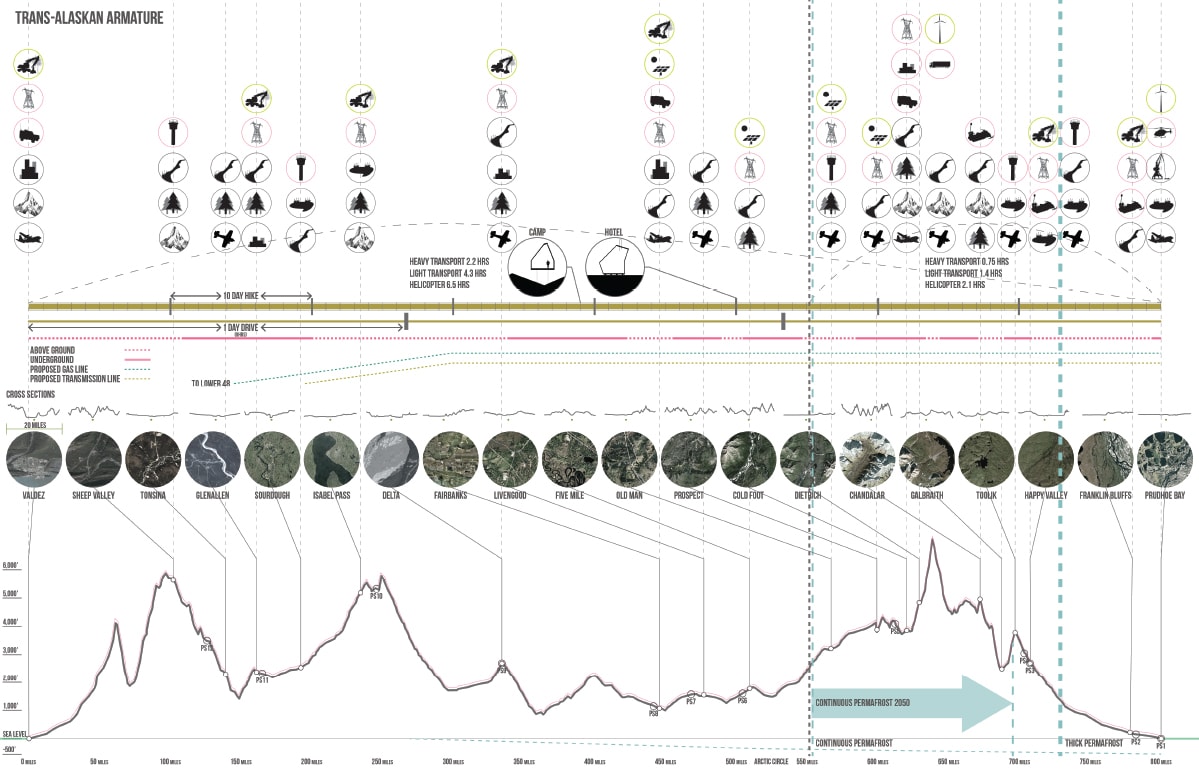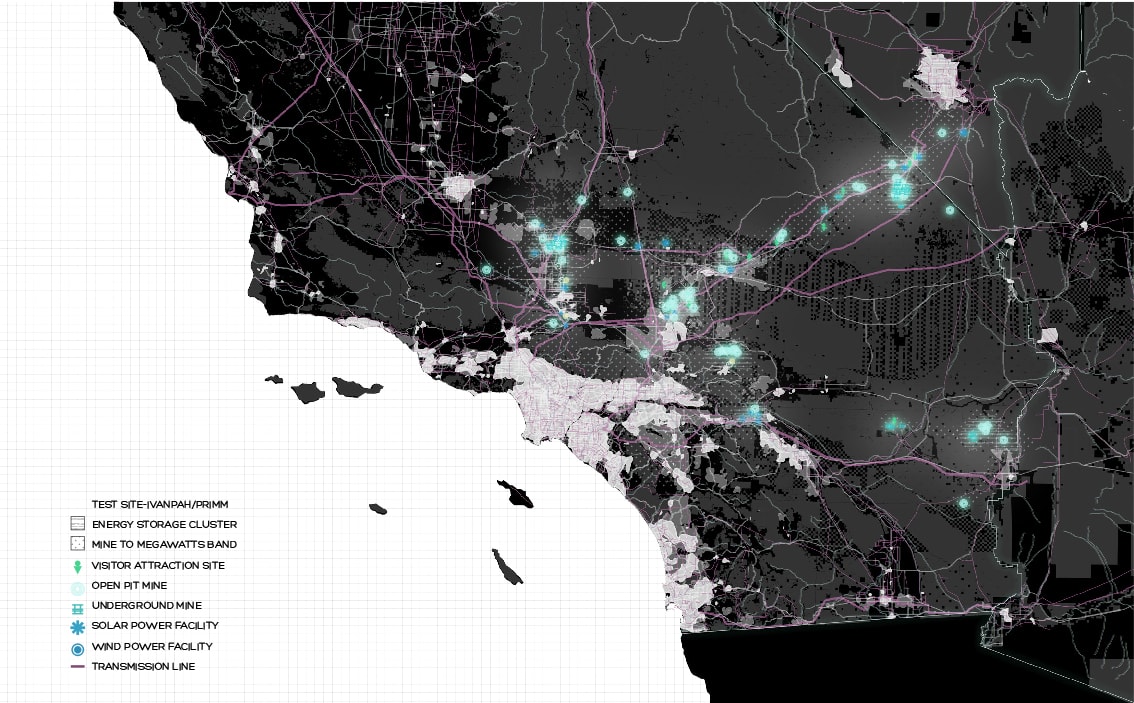Extraction sustains our society. We rely on energy to power the technology in our lives but are disconnected from the landscapes that must be exploited to yield that energy. We dig and blast materials to construct and repair the physical infrastructure of our towns and cities, but rarely pause to think about the origin of the gravel, concrete, steel, foam and bitumen that comprise the built environment. We rely on rare earth metals to manufacture lifesaving medical devices and disposable electronics without considering the political consequences of rare earth smuggling or mine leachate on drinking water supplies. Globalized markets trade hard commodities without minding the origin of materials at all.
Still, extraction is always local. Raw materials are wrought from the earth, shaping the landscape physically in the process — chewing up the ground, hollowing aquifers, altering the composition of the oceans, jumbling the structure of soils. As the world population becomes more urban and more spatially removed from the landscapes that supply its raw materials and energy needs, as supply chains elongate and become more globalized, our reliance on remotely extracted natural resources only continues to increase, while our relationship to the landscapes of extraction recedes ever further from daily view.
This issue of Scenario Journal explores such landscapes of extraction and the networks of relationships that sustain them. Each piece brings us closer to a landscape and the processes of extraction that have shaped it over time, but they also ask in earnest, do we really understand these spaces at all?
Extraction is difficult to define. Grammatically, it is an action noun, an entity that refers explicitly to an activity — the pulling out, or the forcible taking of material from the earth, or from a body. Extraction, in the context of material resources, takes place across space and time. This abstract notion can be broken down into three primary components: material, form, and process.
Material
The raw materials from which our cities are built are extracted from discrete places. Once wrestled from the ground, from the water, or from the atmosphere, materials are transported across physical space to arrive at their destinations — actions that require both work and labor. Considering the origin of materials allows us to imagine the physical impact on real, if distant, landscapes.
The logistical and infrastructural connections of the city to its hinterland effectively expand the urban territory — connecting sites of extraction, conveyance, and consumption. As landscape architect Jane Hutton has written, “the study of paired landscapes of production and consumption generates a spatial framework for examining the social and ecological relations of their material exchange.” [1] Her essay, Reciprocal Landscapes: Material Portraits in New York City and Elsewhere, traces the paths from quarry, steel mill and forest to engineered urban landscapes, providing an example of richness and imaginative potential of such material mappings. While the physical materials used to construct buildings, landscapes, and infrastructure can be readily observed and traced, this practice is more difficult for the immaterial resources of energy production that powers every corner of our economy. To see the full impact of an urban project, we need to imagine the larger connections between that project and the landscapes that supplied its raw materials, energy and labor. Understanding these landscapes will involve reconciling the social and the physical, seeing landscape as a social construct, or as J.B. Jackson remarked, “as a concrete 3-dimensional shared reality.” [2]
It is fashionable these days to take great interest in where our food and beer comes from, yet we actively ignore the sources of far more impactful (and necessary) materials like copper and lanthanum. We prefer that hazardous raw materials come from somewhere far away. Other materials are so ubiquitous as to become invisible. “Like archeology, which is time read backwards,” says Lucy Lippard, “gravel mines are metaphorically cities turned upside down, though urban culture is unaware of its origins and rural birthplaces.” [3]
Mining, in particular, is primarily regarded as a means to an end, rarely seen as having any intrinsic value aside from economic benefits for an increasingly small few. The monetary value of raw materials regularly outweighs concerns about the practices and processes required to bring them to market. Oil, natural gas, and precious metals are considered too valuable to keep in the ground, rendering the value of the landscapes themselves insufficient.
Form
Still, when we do seek out landscapes of extraction, it is often the form of the pit, the mine, the quarry, or the well field that captures our imagination. After decades of breathtaking high-resolution aerial photography saturating the art world and popular media alike, large-scale land transformation tied to mega dams and open pit mining have become an integral part of our contemporary landscape imagination — a testament to human accomplishment and ingenuity to some, a source of deep concern to others.
While remote sensing and the ubiquitous nature of Google Earth has made some impacts and activities easier to see and comprehend, the physical form of extraction does not neatly correspond to environmental, social or economic impact. Some forms of extraction are so striking that they have come to represent the landscape sublime. Other forms of extraction are difficult to image.
The drama of a copper mine is more photogenic than the draining of an aquifer by a million tube wells. Indeed, the most profound systems of extraction are nearly invisible. Consider the deterritorialized extraction of atmospheric nitrogen (and its conversion into fertilizer through the Haber–Bosch process) that fueled the agricultural revolution, global population growth, and widespread land conversion. Physical forms, locked in time and space, rarely tell the full story.
Still, by looking deeply, we may begin to unpack the relationship between forms and the unseen networks that shape them. The form of the landscape is not arbitrary but contains within it traces of history and the pressures of present conditions. Form is a response to more complex, dynamic systems.
The physical forms of extraction operations depend on the intersection of ancient geology, contemporary technology, and dynamic markets. For example, at the turn of the previous century, old mines followed seams of mineral ore primarily underground, tunneling along the seam beneath pristine landscapes and urban areas. As mining technology developed and extraction industries consolidated, it became feasible to excavate huge open pits, and not just tunnels, despite the need to process literal mountains of overburden. Rising mineral prices and bigger machines made the low-quality dregs of “exhausted” and bankrupt mines once again ripe for re-extraction. The form of the mine, and the experience of the miner, were altered completely by a combination of markets and machinery.
Contemporary mining projects can also be understood as complex, dynamic objects. Architect Liam Young, in his description of a gold mine in Western Australia, captures a gold mining operation’s fine-tuned response to market forces: “based on gold prices, the pit model changes…if the gold price or the mineral price is higher, then the pit gets wider as it becomes cost-effective to mine areas of lower concentration. This happens nearly in real time—the speed of the machines digging the pit can change over the course of the day based on the price of gold, so the geometry of the pit is utterly parametric, modeling these distant financial calculations.” Based on speculative models of ore bodies embedded in geological formations, mine operators balance extraction economics, angles of repose, mechanical considerations, surface constraints, and so on: “the shape of the ensuing pit is not the result of frantic, directionless digging, but of a carefully controlled design process.” [4]
Process
The literal process of extraction reveals still more layers interconnection. Understanding the material and logistical mechanisms of extraction allow us to see that multiple extractive processes are often interconnected, and form webs of complex feedback loops that link disparate landscapes. The fracking boom in the Marcellus and Bakken shales, for example, has accelerated the mining of silica sands across the Midwest, displacing farmlands, forests, and even settled areas, and raising fears of an imminent sand shortage. In California, the draining of ever-deeper aquifers — so-called fossil waters, accumulated over millions of years — has been made possible by the repurposing of a new generation of oil drilling rigs, designed and built for the shale fracking boom: fossil water extraction paralleling the tapping of fossil mineral reserves. [5]
Often the hidden material that supports or is impacted by another, seemingly unrelated form of material or energy extraction is fresh water. Extraction processes often affect water resources in dramatic and invisible ways, driving large-scale environmental change. Ore processing as part of mining demands large amounts of water, which ends up in colorfully toxic tailings ponds; the hydraulic fracturing extraction boom likewise demands the direct use of water in huge amounts, altering both surface and sub-surface flows. Other forms of energy production — even renewable ones like solar- and geothermal power plants — also use large amounts of water, to the extent that the coupled relationship of water in energy production, and energy in water supply and treatment, are collectively referred to as the energy-water nexus.
In addition to the direct consumption of freshwater resources, mines and quarries routinely dig below the water table; when these facilities eventually close down and pumping stops, the holes fill back up with groundwater, now laced with byproducts of the mining process. In Butte, Montana the water in the massive Berkeley copper pit documented by Bradford Watson and Sean Burkholder in their essay is still steadily rising more than 30 years after the mine has closed, bringing home a basic hydrological principle to residents long used to being disconnected from natural processes in a dramatically engineered extraction landscape.
Today the mining of groundwater is rapidly converging with the traditional narratives of oil extraction. Speculation, traditionally the purview of the commodities sector, has become the norm in drought-ridden California, as hedge funds compete to grow the most water-intensive crops and out-compete smaller farmers who can’t afford deep wells. Economic activity unleashed by extraction in one place drives urban growth and patterns of consumption in geographically distant, but economically tethered locations.
Beyond the material landscape, extraction also catalyzes, and relies upon, dynamic networks of transportation and invisible economic subsidies. Generations of ever-cheaper transportation infrastructures (from canals and railroads to pipelines and ever-larger ocean-going vessels) have resulted in an extended network of extraction and consumption. Historically low-value materials such as coal or crushed rock, which tended to be extracted, processed, and sold locally, can now move long distances. Both gold and coal from Australia can now be profitably shipped halfway across the world, and lithium from Bolivia can fuel high-tech manufacturing in China, as shown by Unknown Fields Division’s global treks in search of the interconnected global extraction landscape.
Thanks to the globalization of material supply chains, and continuing decreases in the cost of shipping, the actual places of extraction for the thousands of materials and components of a gadget or building project are scattered around the world — distance has long ceased to be the primary, or perhaps even a relevant, determinant of material availability.
Extraction cannot be regarded as an activity in isolation. Indeed, extraction is followed by transformation. It is not raw materials alone that are moved from place to place — individuals and communities migrate for work and so too are transformed. Capital changes hands as riches are made or lost.
This issue attempts to move beyond clear binary stances on the positive or negative impacts of extraction. Collectively these pieces present extraction as a condition rooted in history, actively transforming the future of the landscape and along with it communities, economy, equity, and technology. They examine the spatial disconnect between the city and its hinterland, but also ask how contemporary cities can begin to offer meaningful connections to their extraction landscapes.
The Essays
The pieces in this collection bring us to the sites of extraction of a range of materials (coal, gold, water, oil, gravel, copper). They also call attention to the extraction of immaterial substances (wind, solar radiation) that shape the landscape nonetheless.
Gavin Bridge sets the philosophical ground for the mine and the hole as spaces that concentrate and squeeze value, time, and labor into discrete geographic moments. In The Hole World: Scales and Spaces of Extraction, he investigates the relationship between the disembodied notion of energy and the specific geological and spatial formations that supply its raw materials. Value is made material, as the operations of the hole compress time and set into motion massive flows of both waste and wealth.
Several essays in this issue explore the identity of settlements that co-exist in physical proximity to their landscapes of extraction, drawing from them their sustenance but simultaneously coping with their legacies of environmental disturbance. Bradford Watson and Sean Burkholder, in Butte, Montana: a Case for the Mining Metropolis, examine the historic mining boomtown as a prime example of a city that grew up on over a century of continuous mining, drawing its culture and its wealth from the massive pit next door that eventually came to dominate the town. In Gold Mining Exploits and the Legacies of Johannesburg’s Mining Landscapes, Guy Trangoš and Kerry Bobbins look to Johannesburg, South Africa, a city founded on gold extraction, where the toxic spoils of this history remains visible throughout the city, decades after the boom has ended.
Frank Matero’s Pit and Quarry: The Cement and Slate Landscapes of Pennsylvania, meanwhile, looks at a region whose history lay in building materials — steel and cement production, coal mining, and slate. He asks how we might best preserve this iconic industrial heritage and these historic extraction landscapes.
Henry Fair brings us to the site of two forms of coal mining in his photo-essay, The True Cost of Coal: The First Installment, the rugged rural terrain of Appalachia, and the flat agricultural expanses of Germany. Alex Breedon’s A Monument to Mining, proposes an elegant gesture that acknowledges the link between metropolis and mine.
Exploring the accidental monuments of excavation, One Percent: Mining Bone Valley by Rob Holmes, Lauren Sosa and Christie Allen, investigates the enormous mounds caused by phosphate mining that dominate the landscape in Florida, where gypsum stacks grow endlessly in response to the voracious global appetite for phosphate. The mining of minerals below ground also calls into question the rights of others who might stake their own claims to the surface, dramatizing how mining privileges the ownership of the subterranean layer of the landscape at the expense of all others. In Contested Landscapes: Staking Claims in Michigan’s Copper Country, Elizabeth Yarina examines how a copper mine in Michigan has ignited a battle between competing groups who each find value in different layers of a vertical territory.
Invisible lines can shape landscapes of extraction. Jamie Vannichi’s Crossing the Line investigates the porous border between one state that bans natural gas extraction, and a neighboring one that actively allows it. Energy Extraction from Wind: Marine Re-Territorialization in the North Sea, Claudia Bode examines the articulation of lineages of spatial control of the seas through the mapping of immaterial phenomena such as fishing rights, wind resources, and international shipping. Matt Wiener, in Grounding Water, investigates the spatial and temporal difficulties of imaging groundwater, a substance often represented as static but which is in continuous motion, calling into question the effectiveness of traditional methods of representation.
Large infrastructural projects upend and reorganize territory, setting in motion new patterns of use and new possibilities for settlement. In The Cheap Frontier: Operationalizing New Natures in the Central Valley, Neeraj Bhatia looks at California’s Central Valley as a completely invented infrastructural landscape: possessing good soils but little else, it has thoroughly transformed itself through the importation of water, technology, and people, and become fine-tuned for extracting maximum value from a thoroughly re-engineered nature.
Finally, in the Museum of Lost Volumes, Neyran Turan speculates on an alternate future where the prolific deployment of clean-energy technologies has resulted in the depletion of the world’s rare earth minerals, and the Zero-Carbon era has drawn to a close.
The pieces in this collection each grapple with a process and landscape of extraction, but each also goes beyond the outward appearances of the dramatic places that they describe. They tie together material and form with the underlying processes and flows that drive these massive landscape transformations. Extraction collectively represents humanity’s most drastic and lasting imprint upon the geological and ecological patterns of the Earth. By looking closely at these vast processes set into motion by seemingly disconnected activities in cities, towns, and industries far away, we aim to highlight the reciprocal nature of these paired landscapes, and to give designers, artists, planners, engineers, and urban citizens a spatial vocabulary for taking collective responsibility for the larger extraction landscape.
SCENARIO 5: Extraction Cover Image by Joseph Elliott
Table of Contents Header Image by Kees Wolthoorn
Feature image by Mathias Liebing
 Stephanie Carlisle is a designer and environmental researcher whose work focuses on the relationship between the built and natural environment. She works in the research group at KieranTimberlake Architects. She is also a lecturer of Urban Ecology in the Department of Landscape Architecture and Regional Planning at the University of Pennsylvania School of Design. She is a co-editor of this issue.
Stephanie Carlisle is a designer and environmental researcher whose work focuses on the relationship between the built and natural environment. She works in the research group at KieranTimberlake Architects. She is also a lecturer of Urban Ecology in the Department of Landscape Architecture and Regional Planning at the University of Pennsylvania School of Design. She is a co-editor of this issue.
 Nicholas Pevzner’s work explores the role that infrastructural landscape moves can play in structuring and sustaining healthy cities. He teaches in the Department of Landscape Architecture and Regional Planning at the University of Pennsylvania School of Design. He is a co-editor of this issue.
Nicholas Pevzner’s work explores the role that infrastructural landscape moves can play in structuring and sustaining healthy cities. He teaches in the Department of Landscape Architecture and Regional Planning at the University of Pennsylvania School of Design. He is a co-editor of this issue.
Notes:
[1] Jane Hutton, “Reciprocal Landscapes: material portraits in New York City and elsewhere,” Journal of Landscape Architecture 8:1, 40-47, DOI: 10.1080/18626033.2013.798922.
[2] John Brinckerhoff Jackson, Discovering the Vernacular Landscape (New Haven and London: Yale University Press, 1984), 5.
[3] Lucy R. Lippard, Undermining: A Wild Ride Through Land Art, Politics, and Art in the Changing West (New York & London: The New Press, 2014),11.
[4] See Geoff Manaugh, ed., Landscape Futures: Instruments, Devices and Architectural Inventions (Barcelona and Reno: Actar/Nevada Museum of Art, 2012).
[5] Perversely, the first oil wells in Pennsylvania in the 1850s and ‘60s employed drilling rigs designed and built for drilling water wells.
